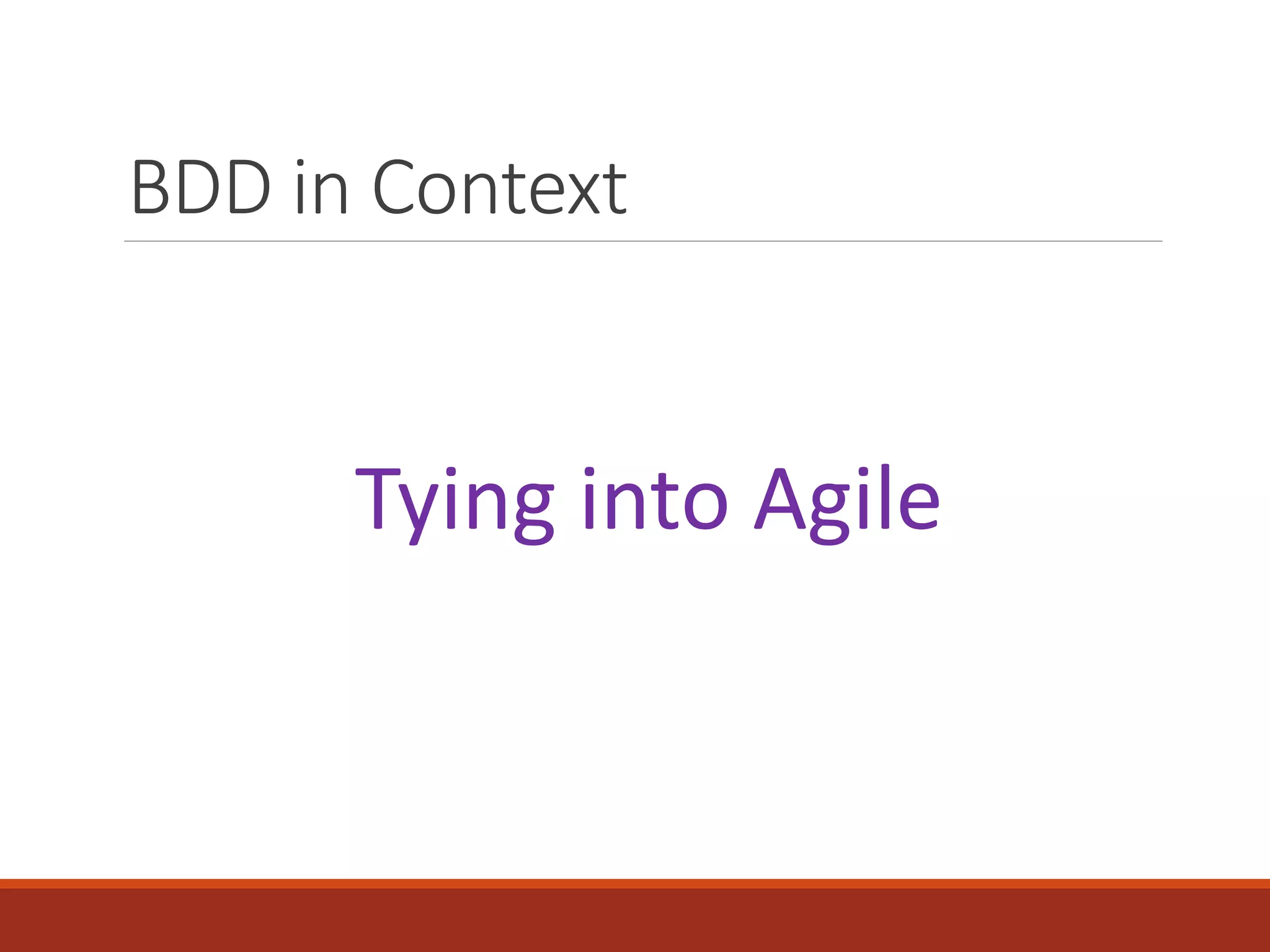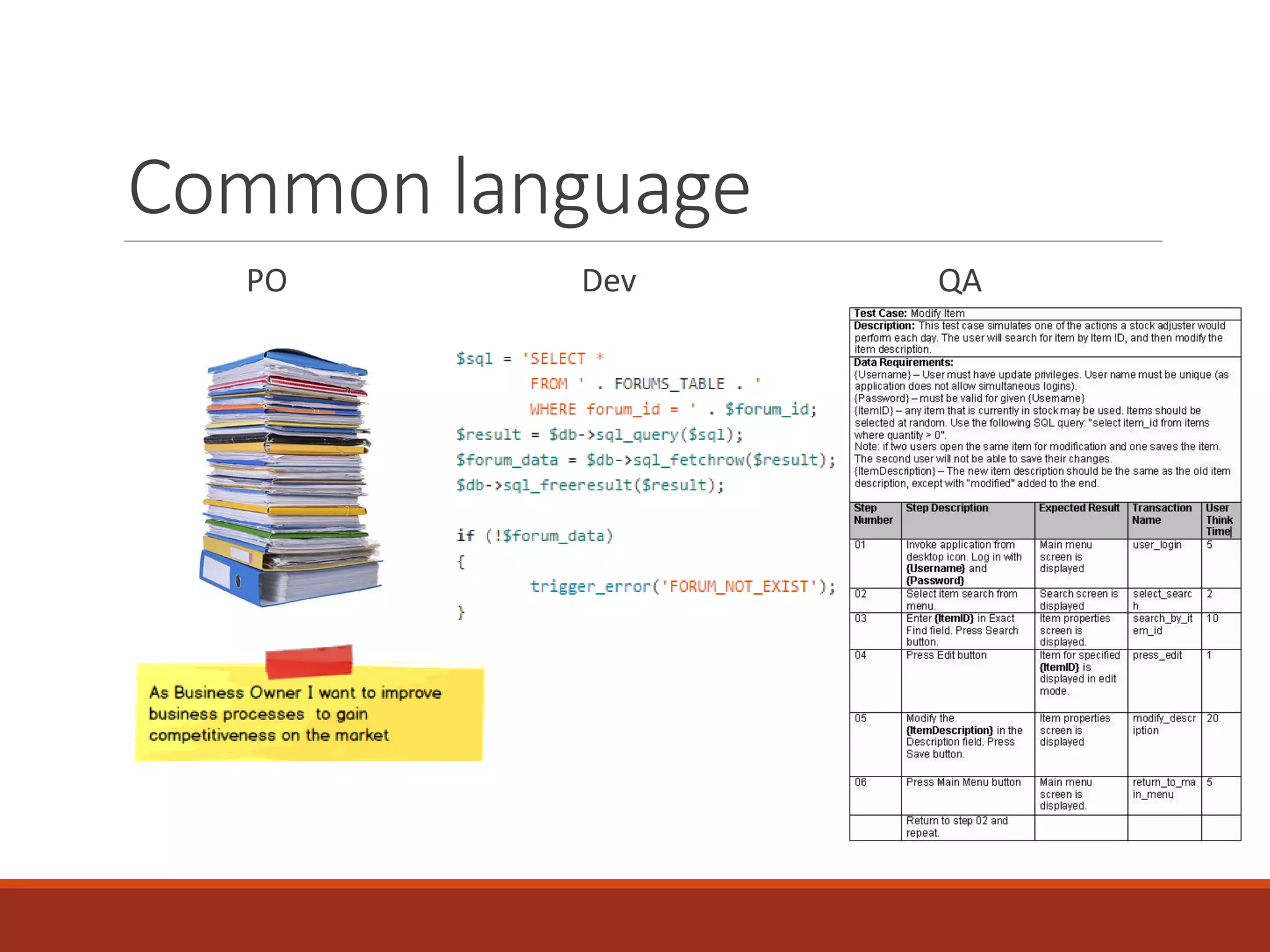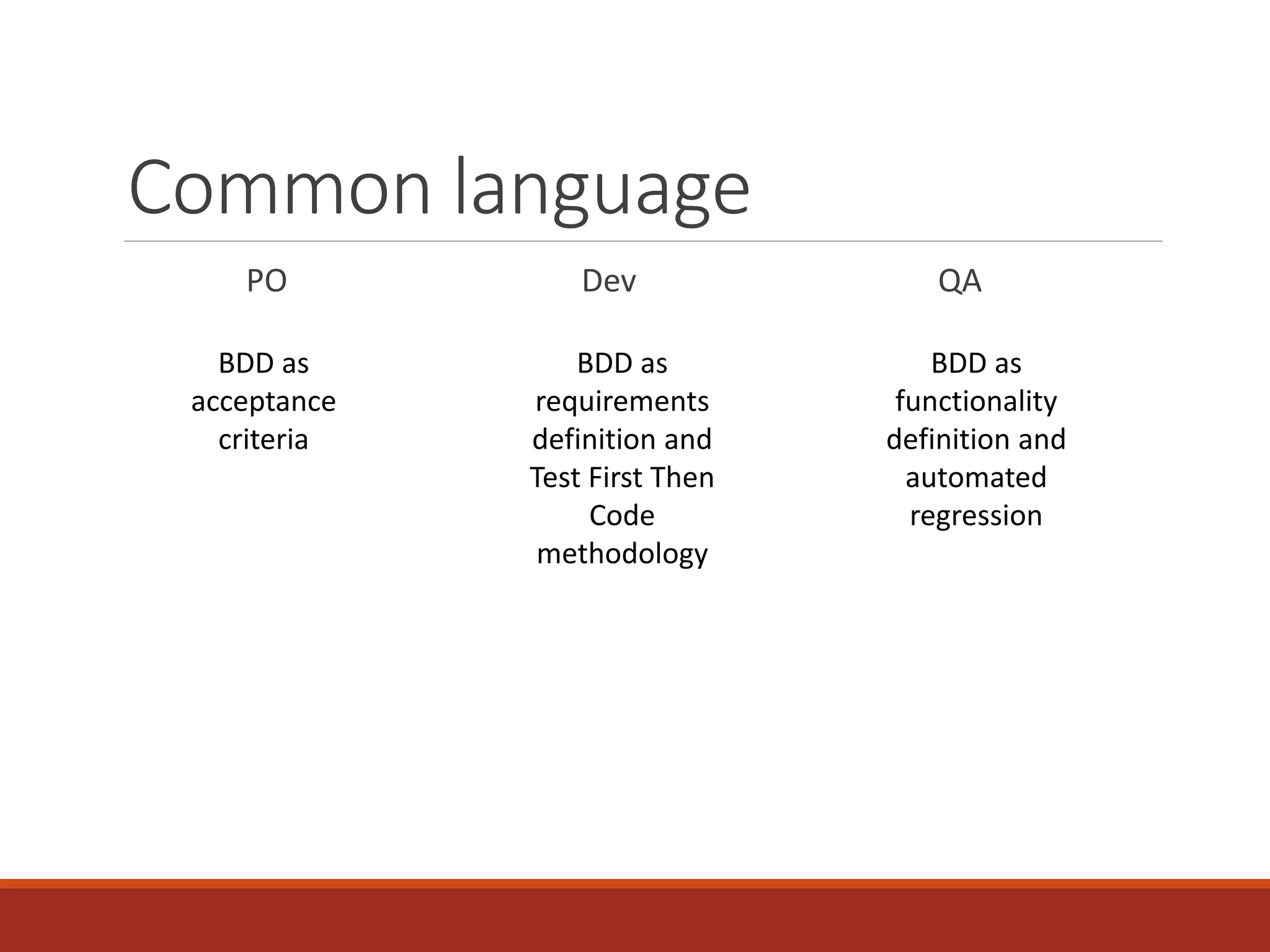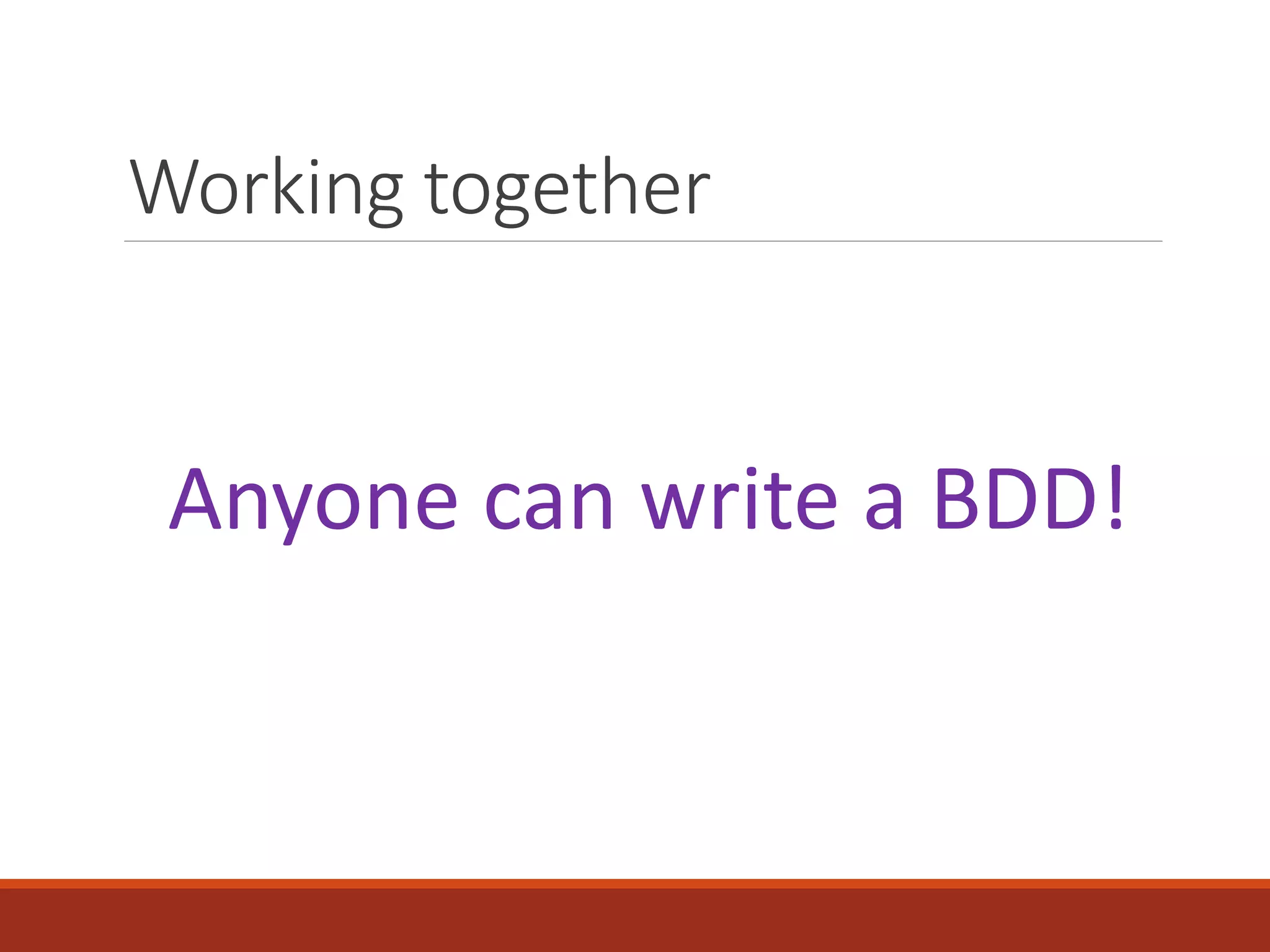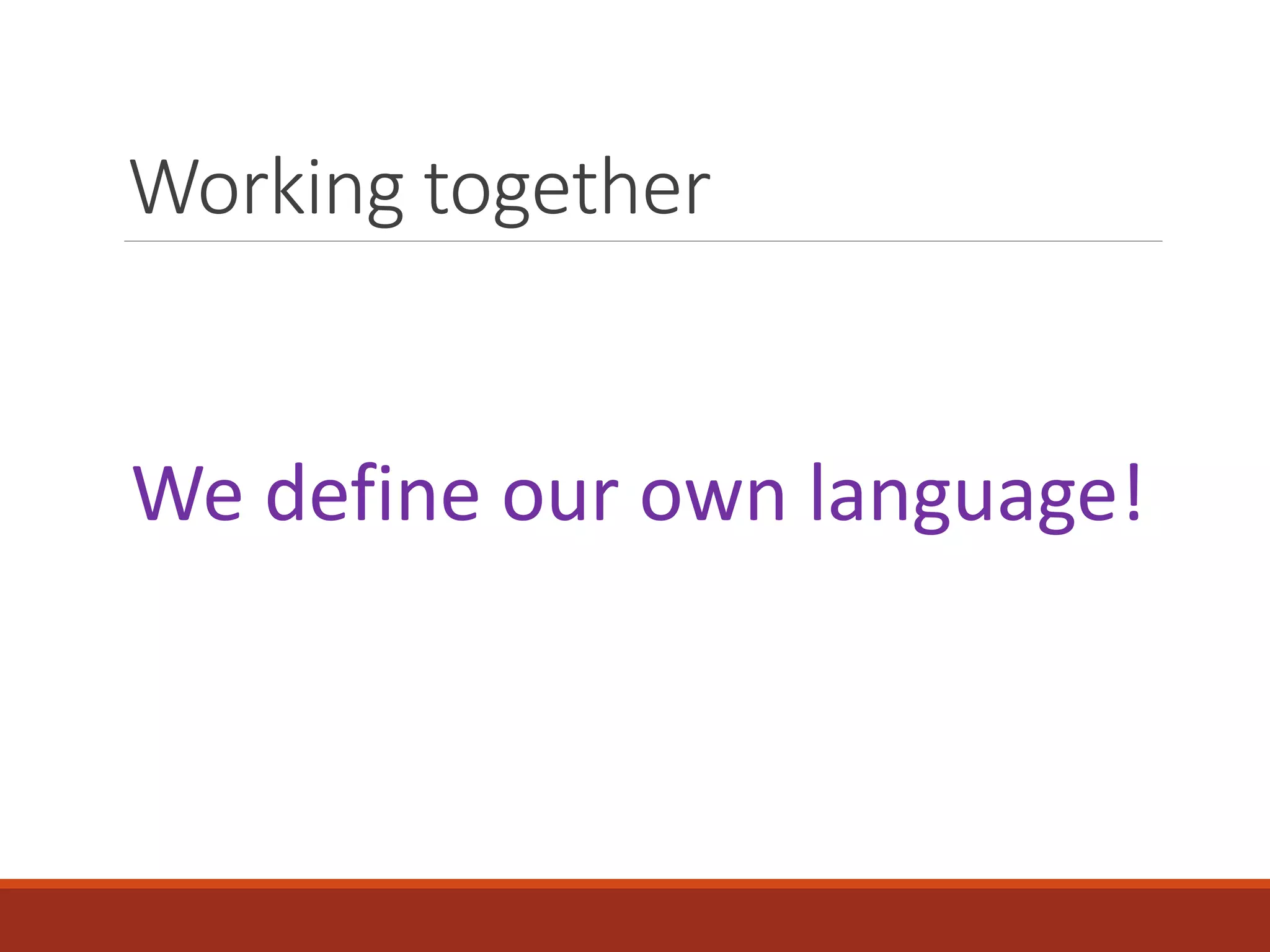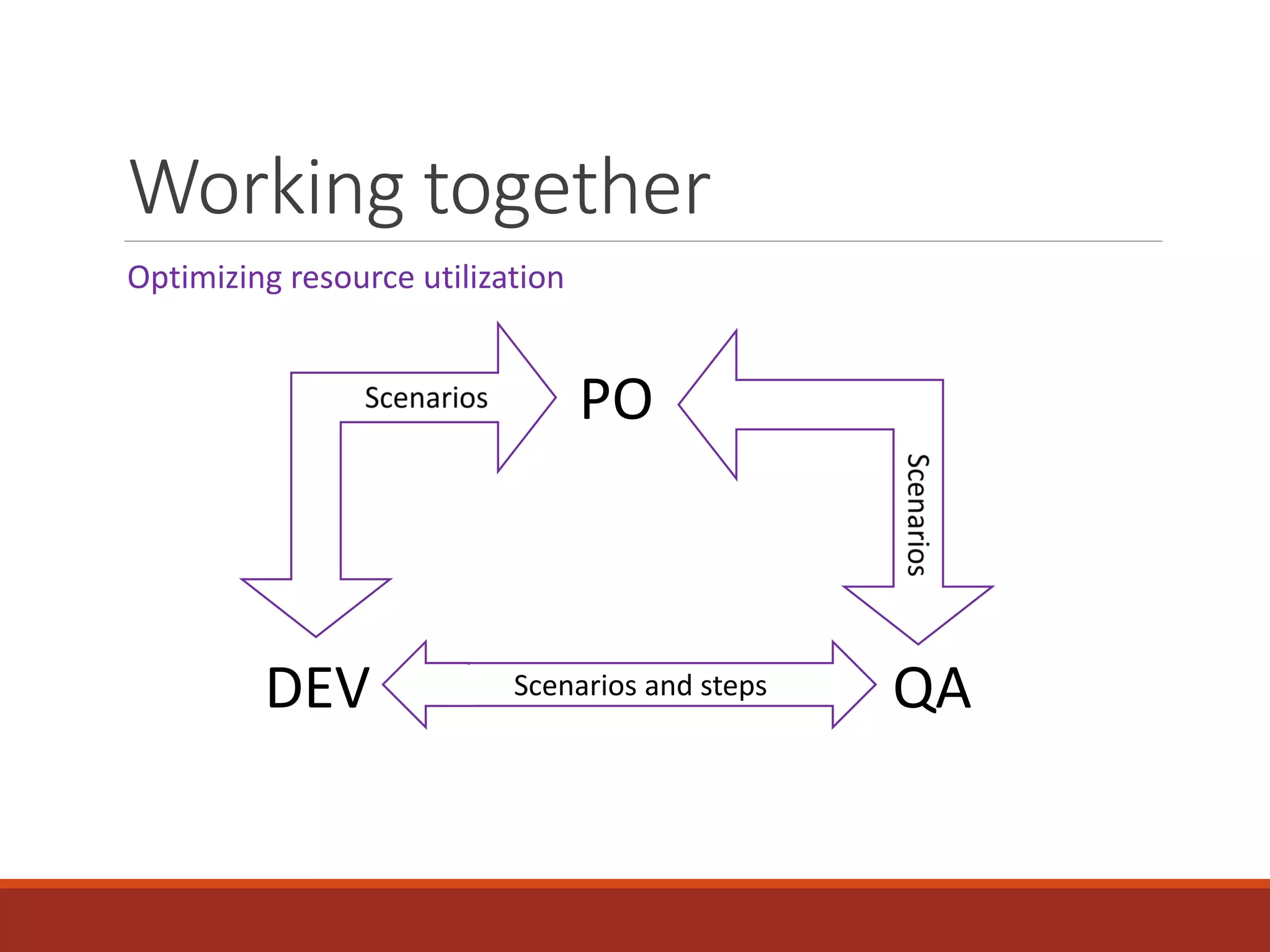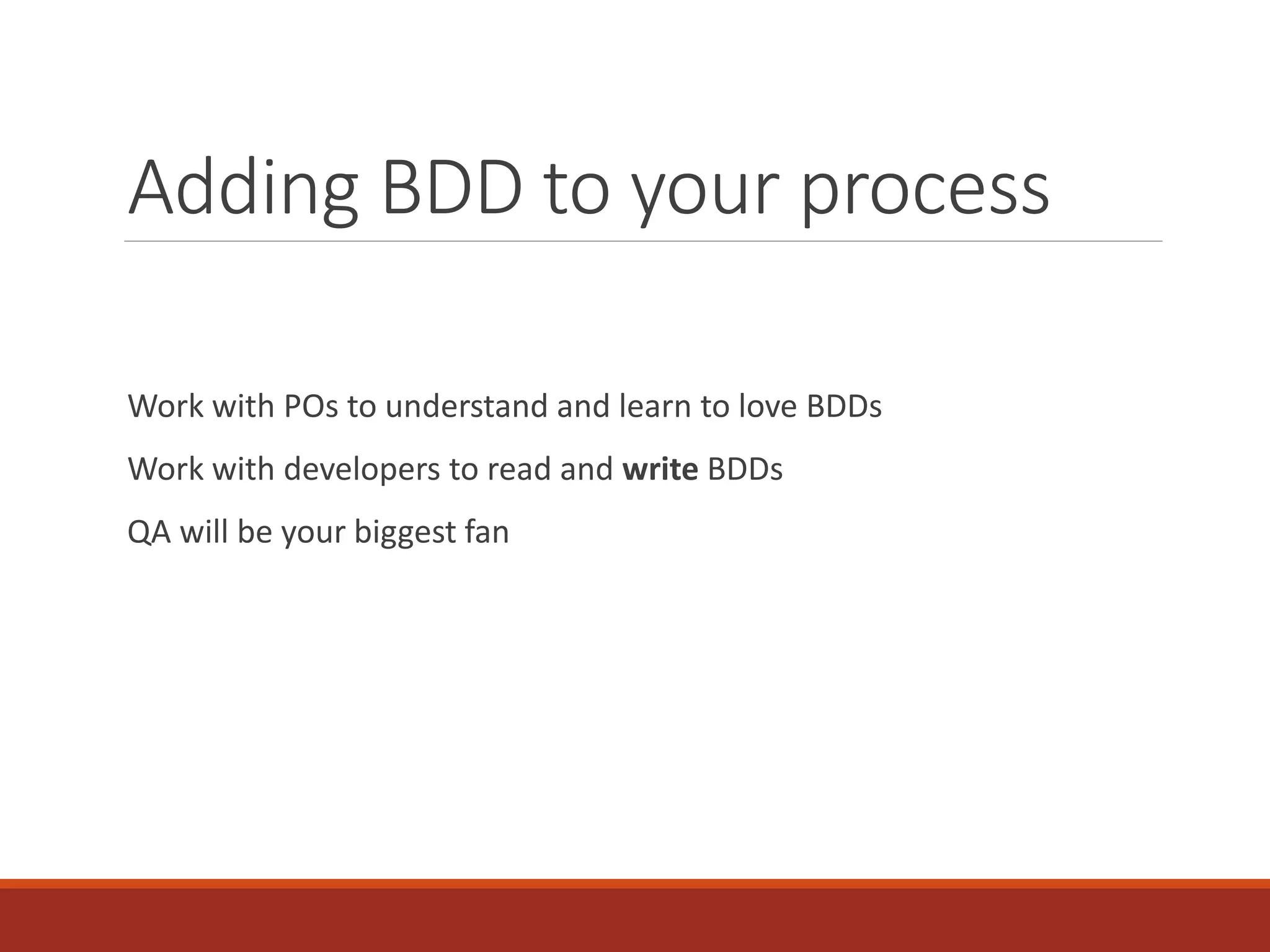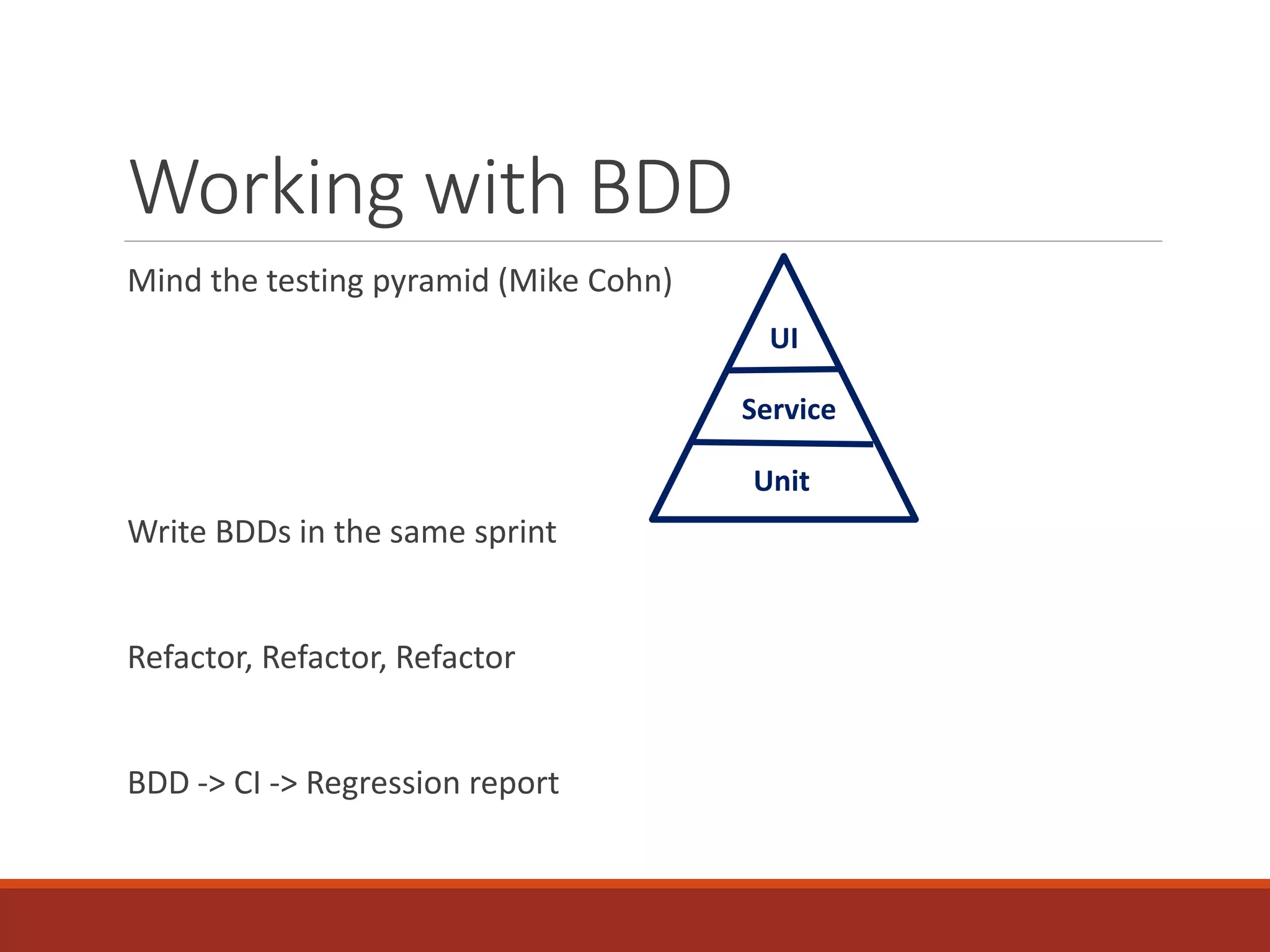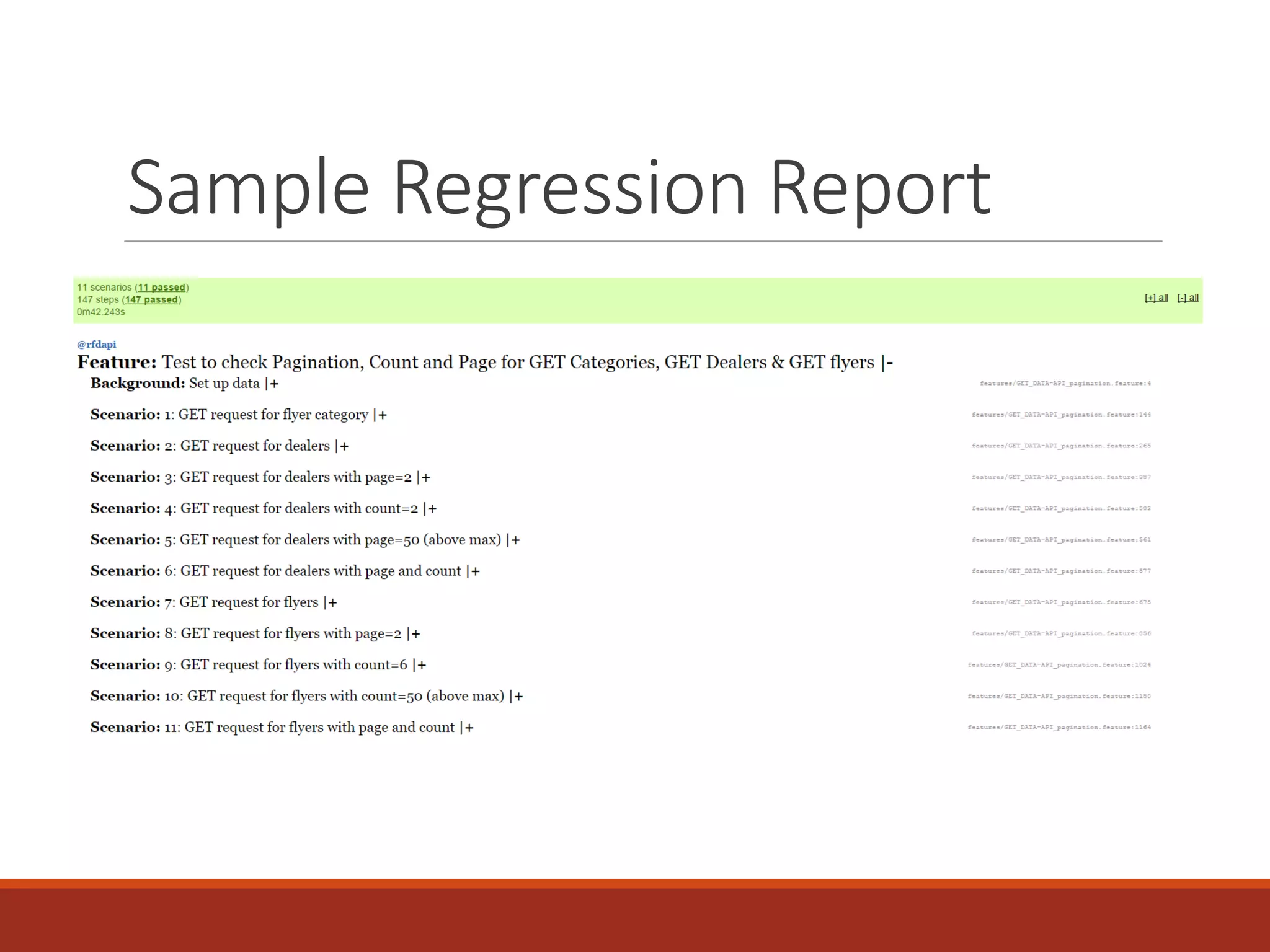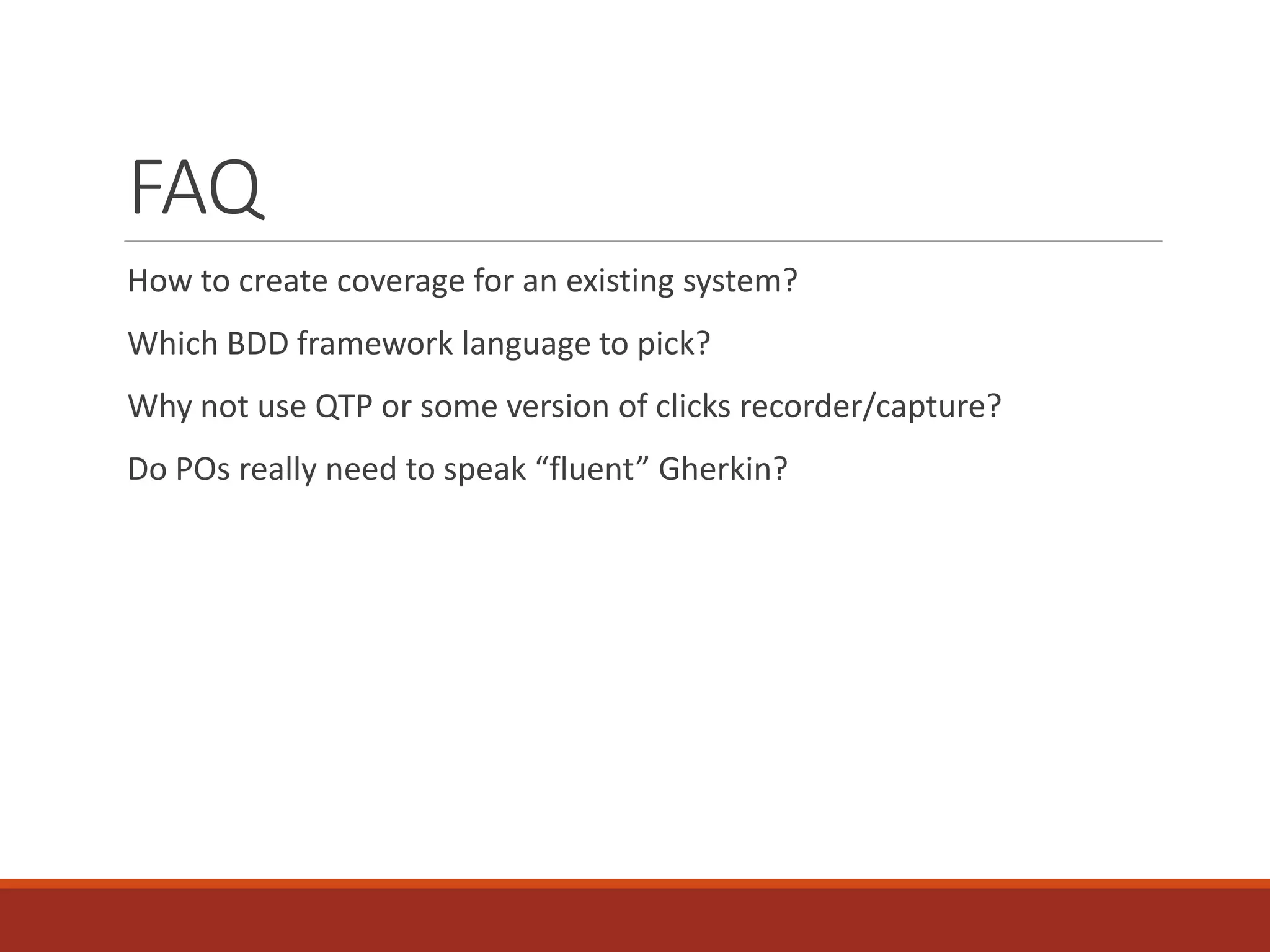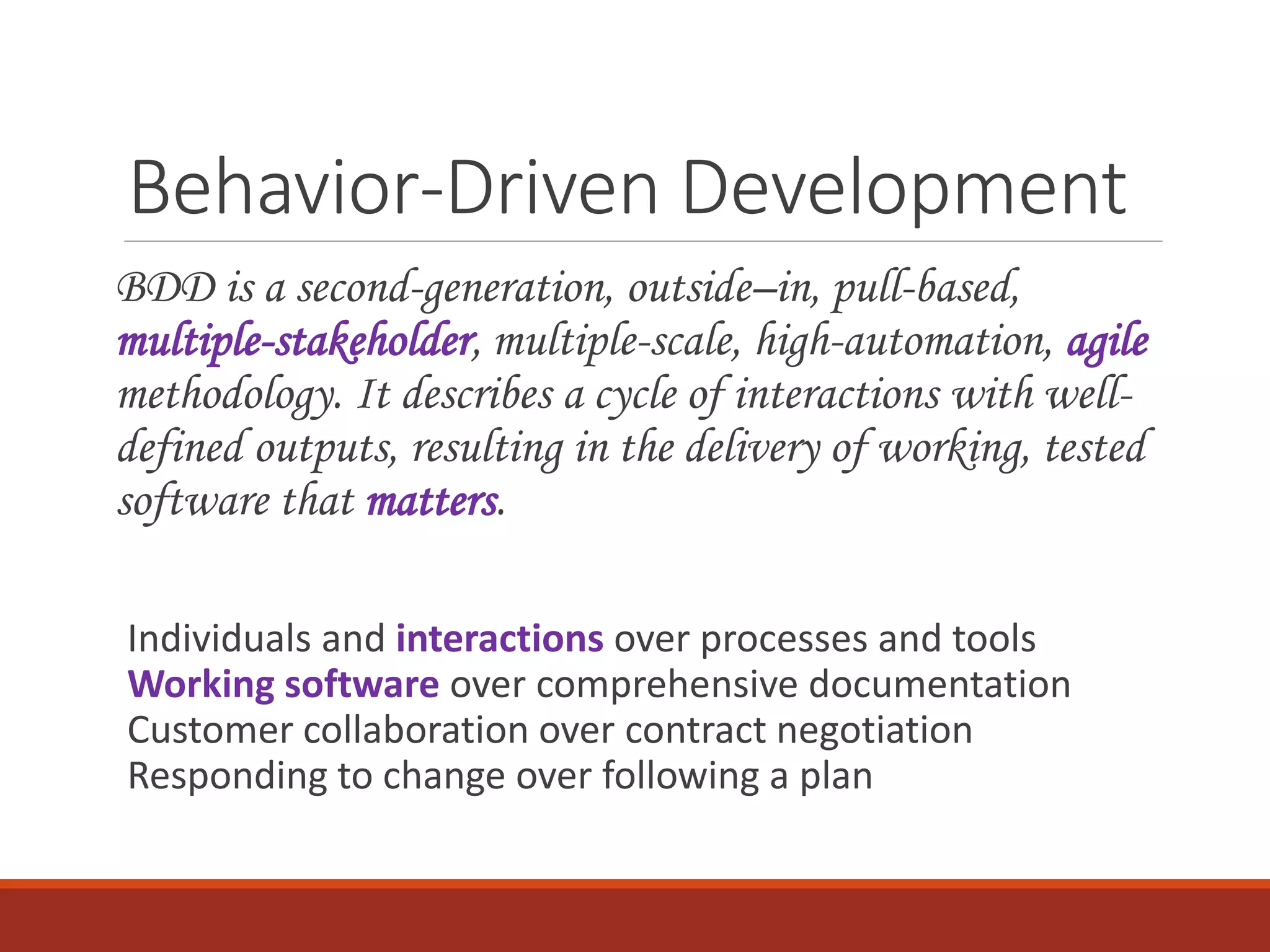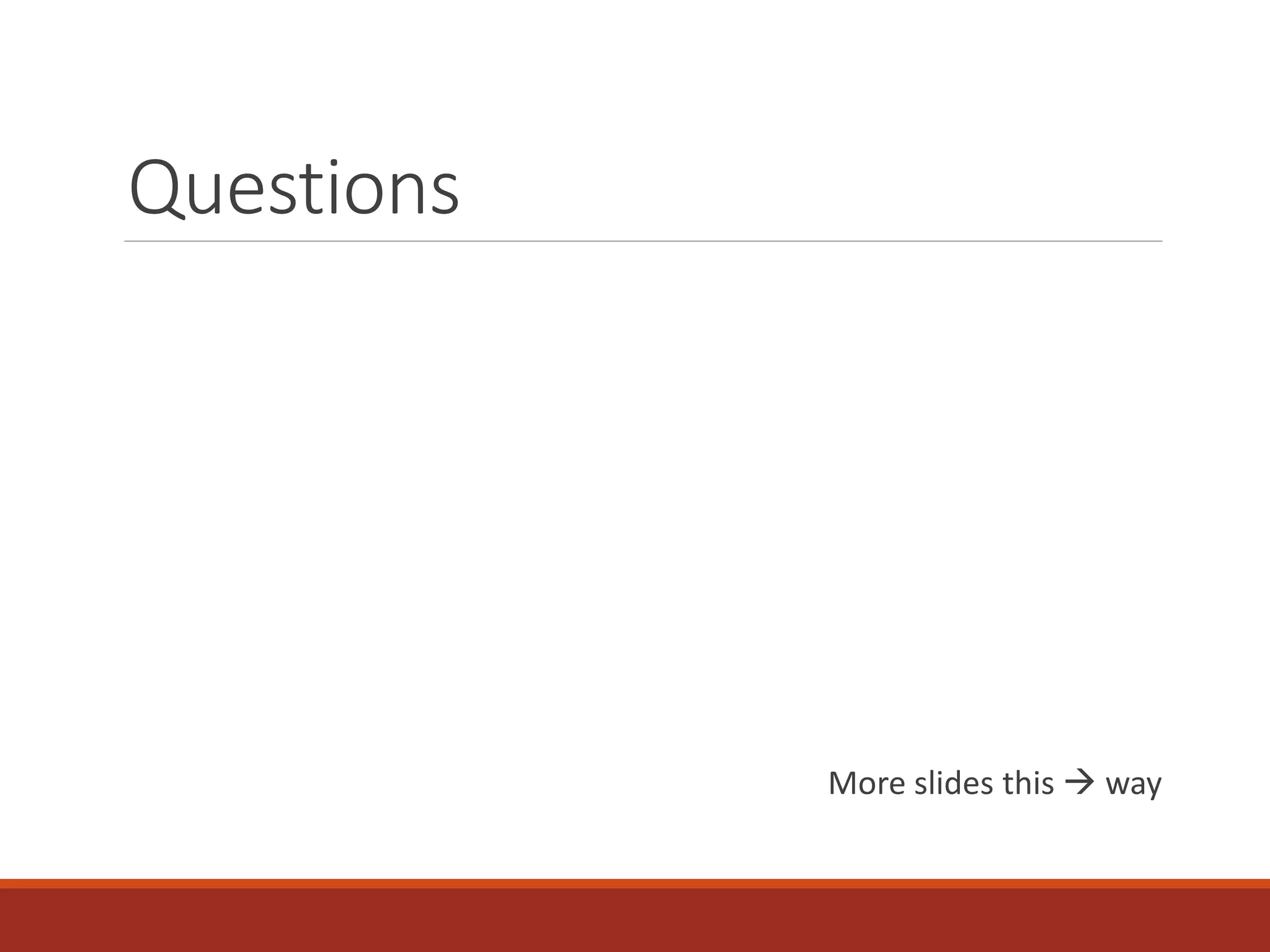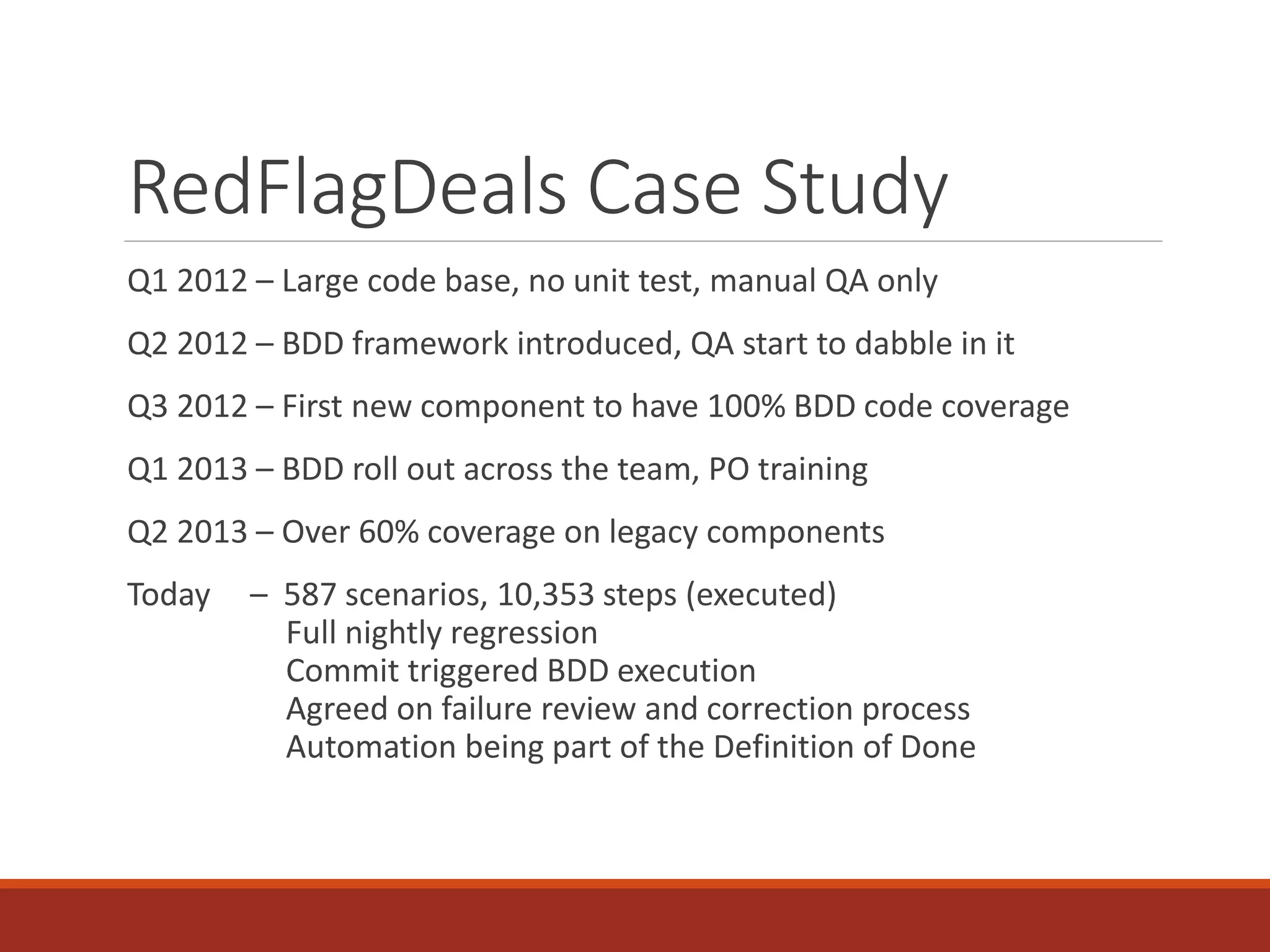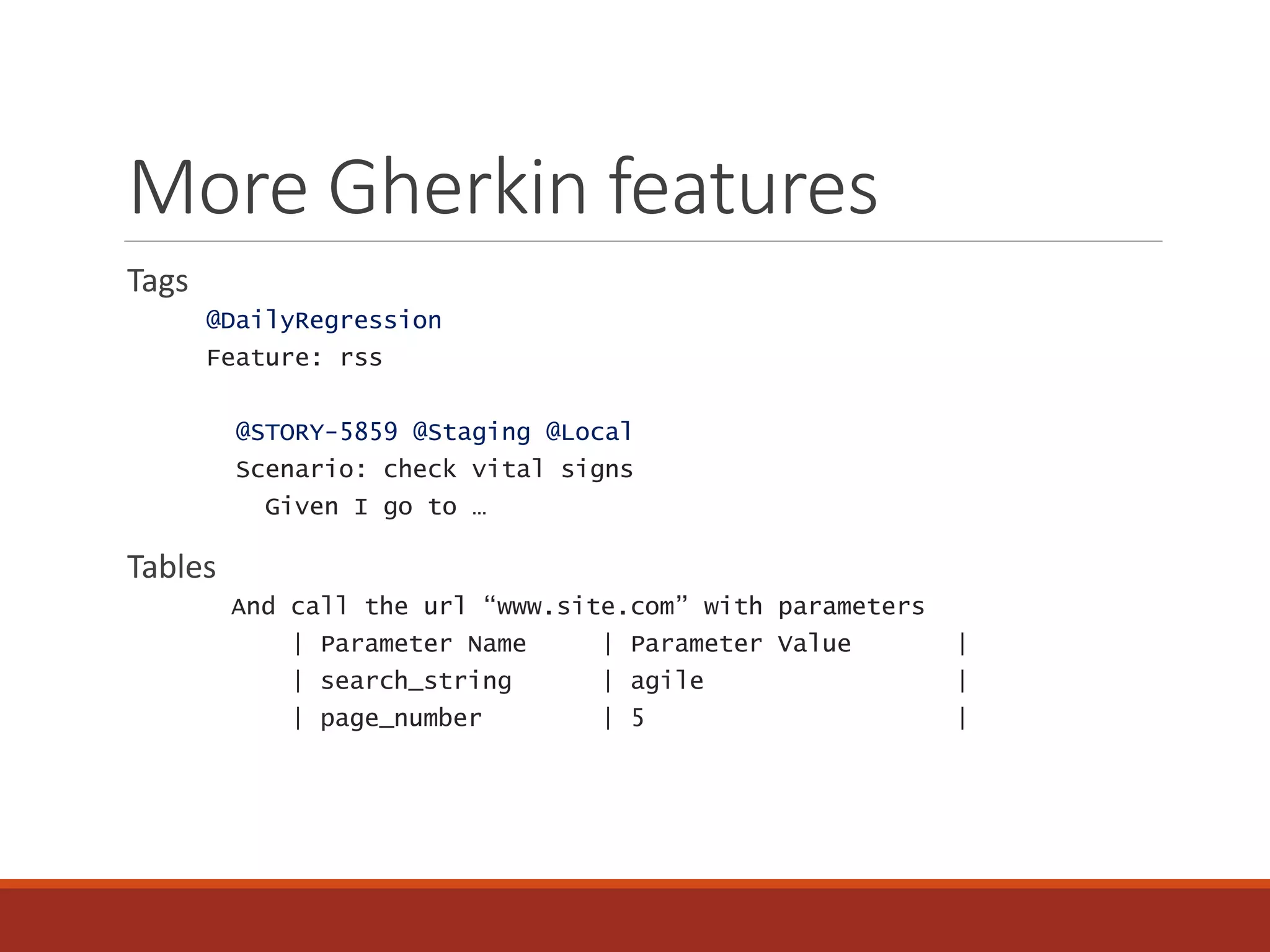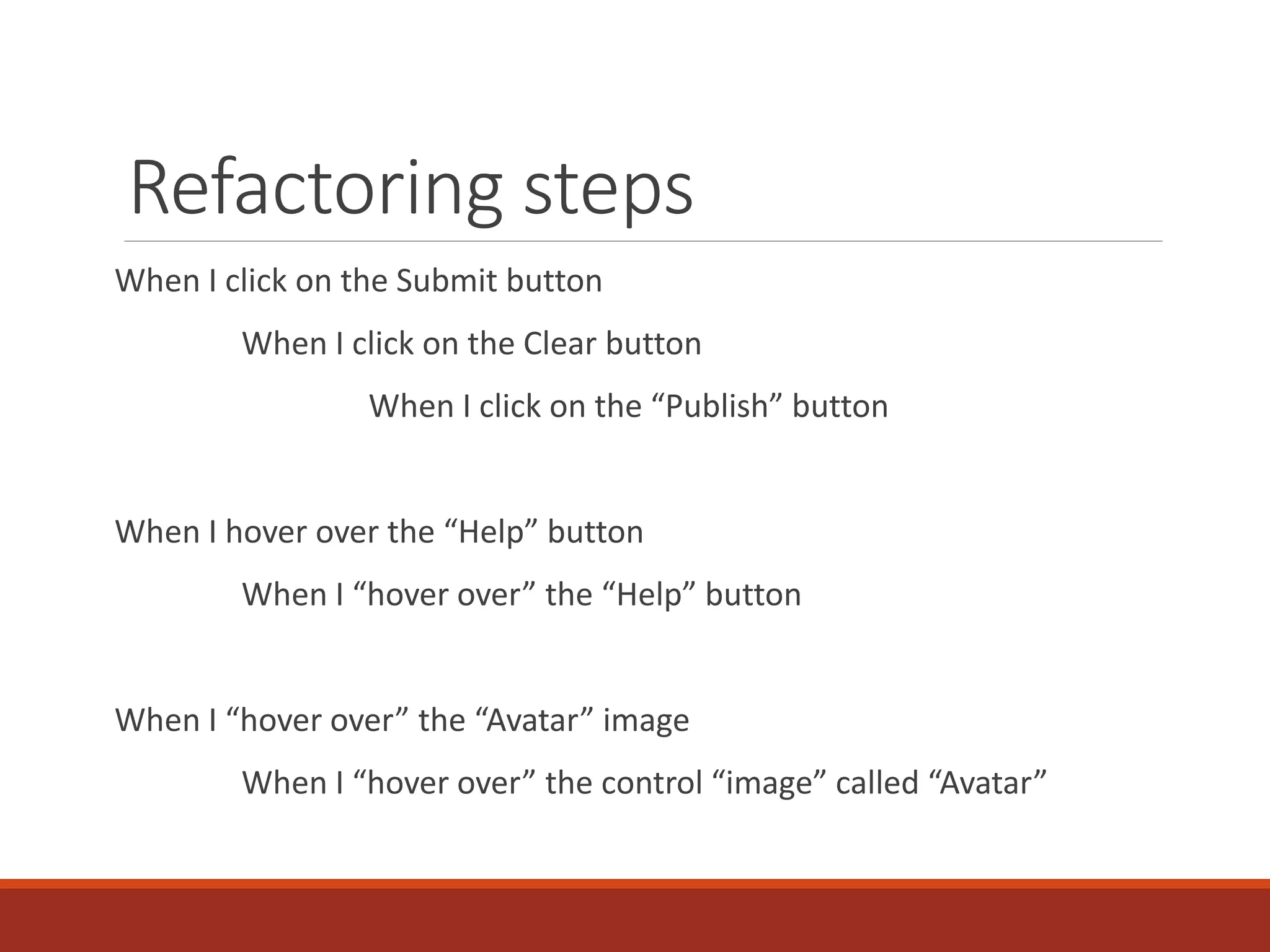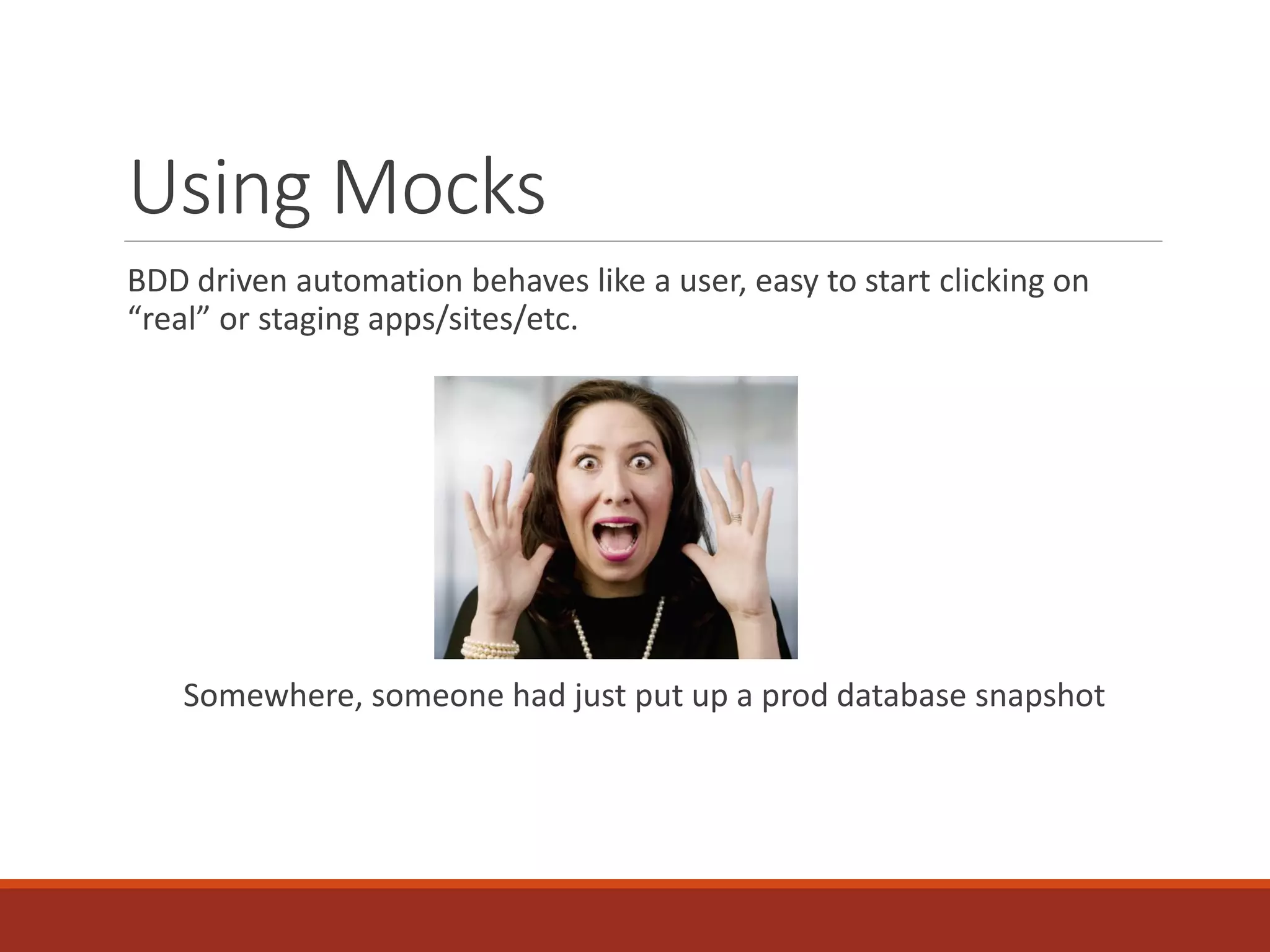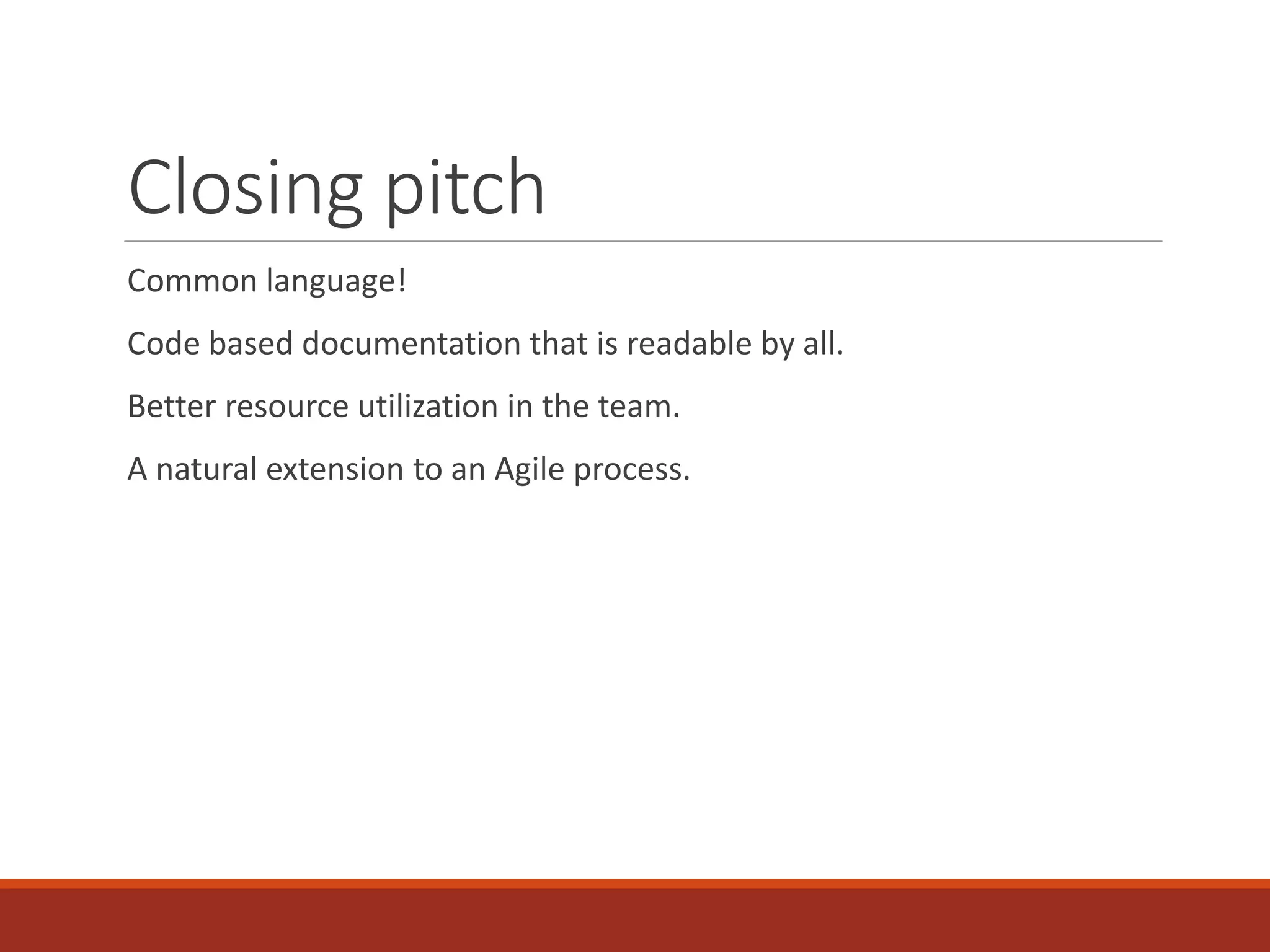Behavior-driven development (BDD) is presented as an effective addition to agile software processes, promoting improved communication among stakeholders and leading to fewer bugs. It utilizes a common language (Gherkin) to define desired behaviors through user stories and scenarios, facilitating collaboration between product owners, developers, and QA. BDD emphasizes automating testing as part of the development process, ensuring the delivery of working and tested software while enhancing resource utilization within teams.
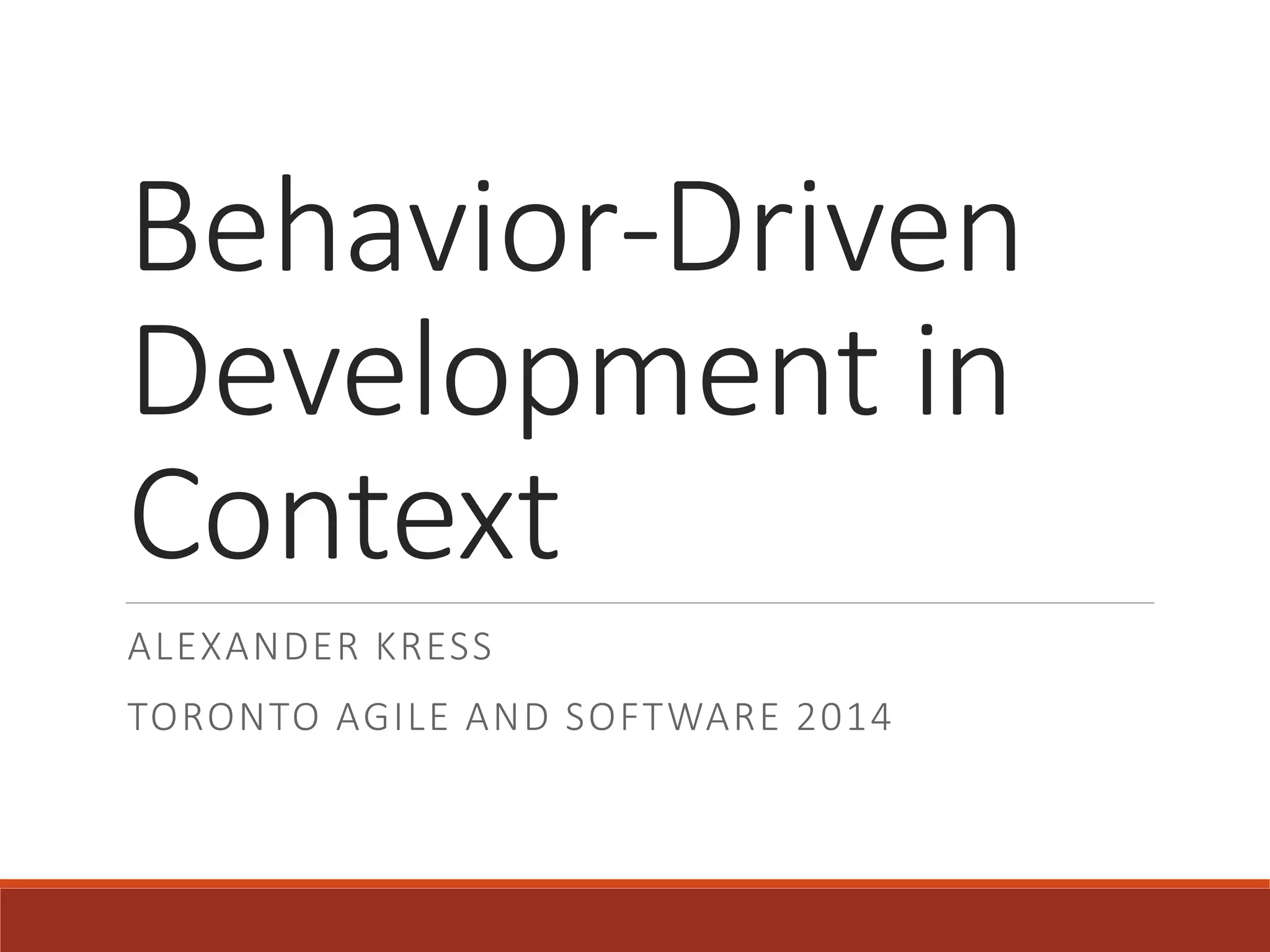
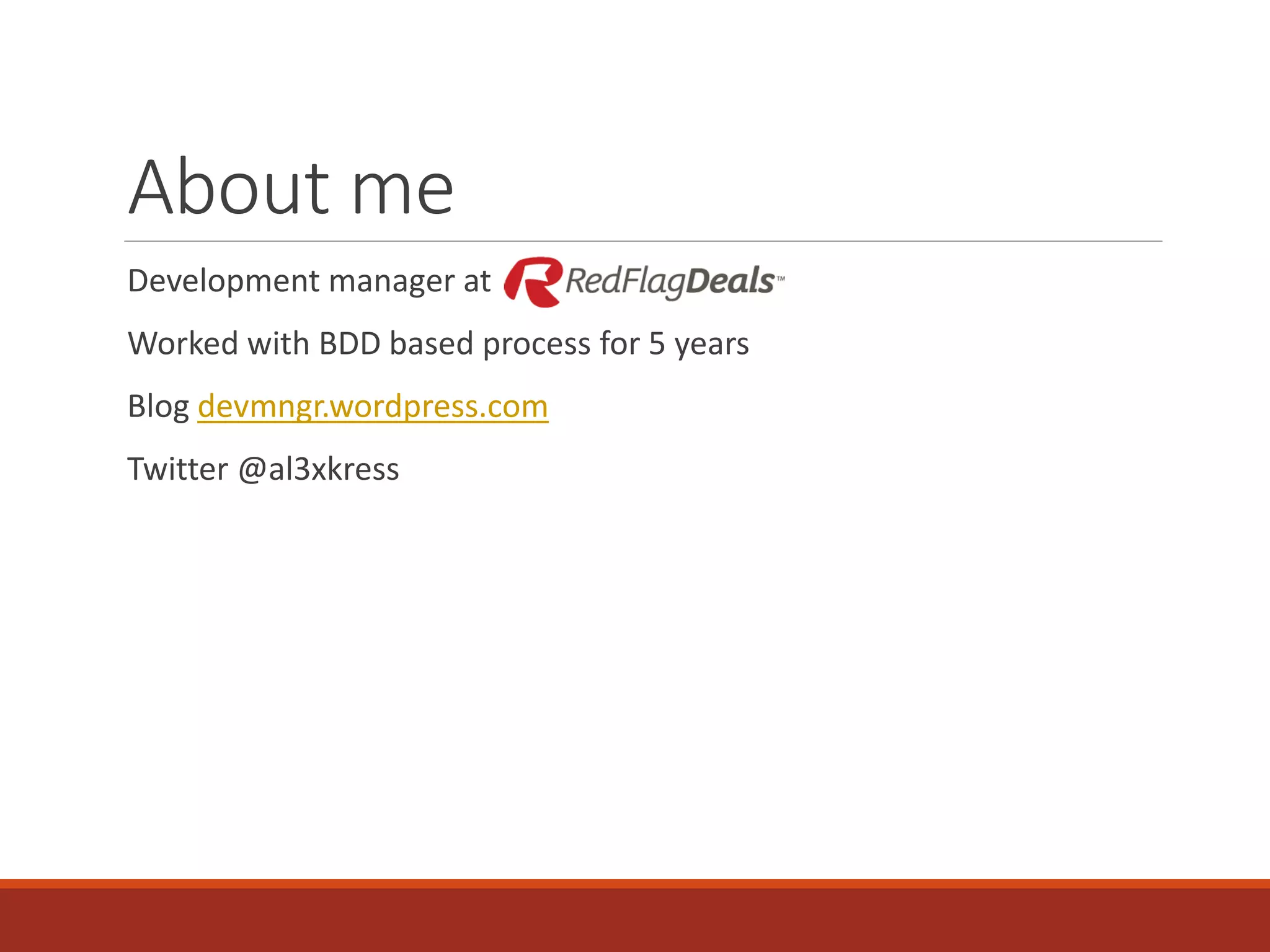
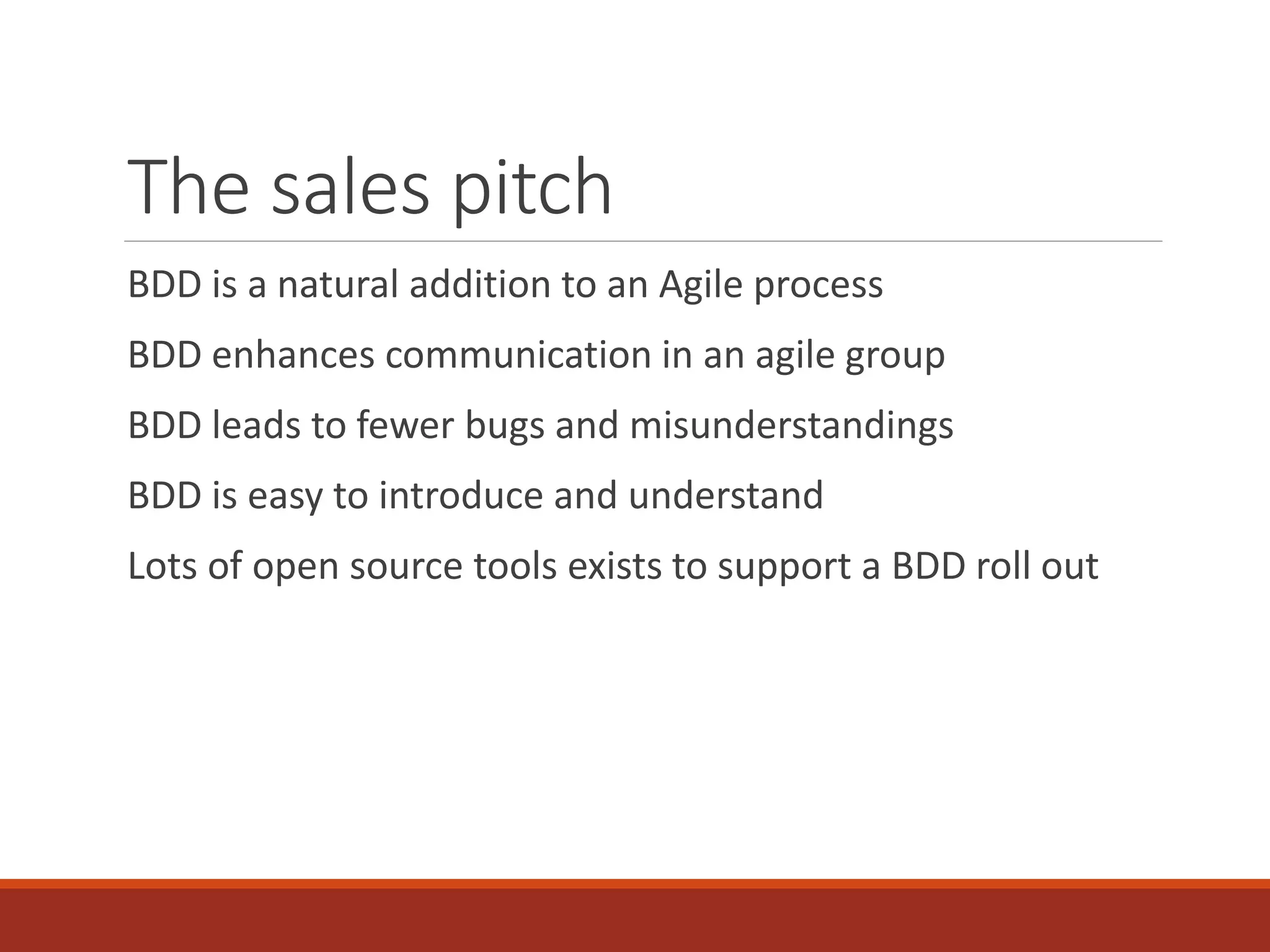
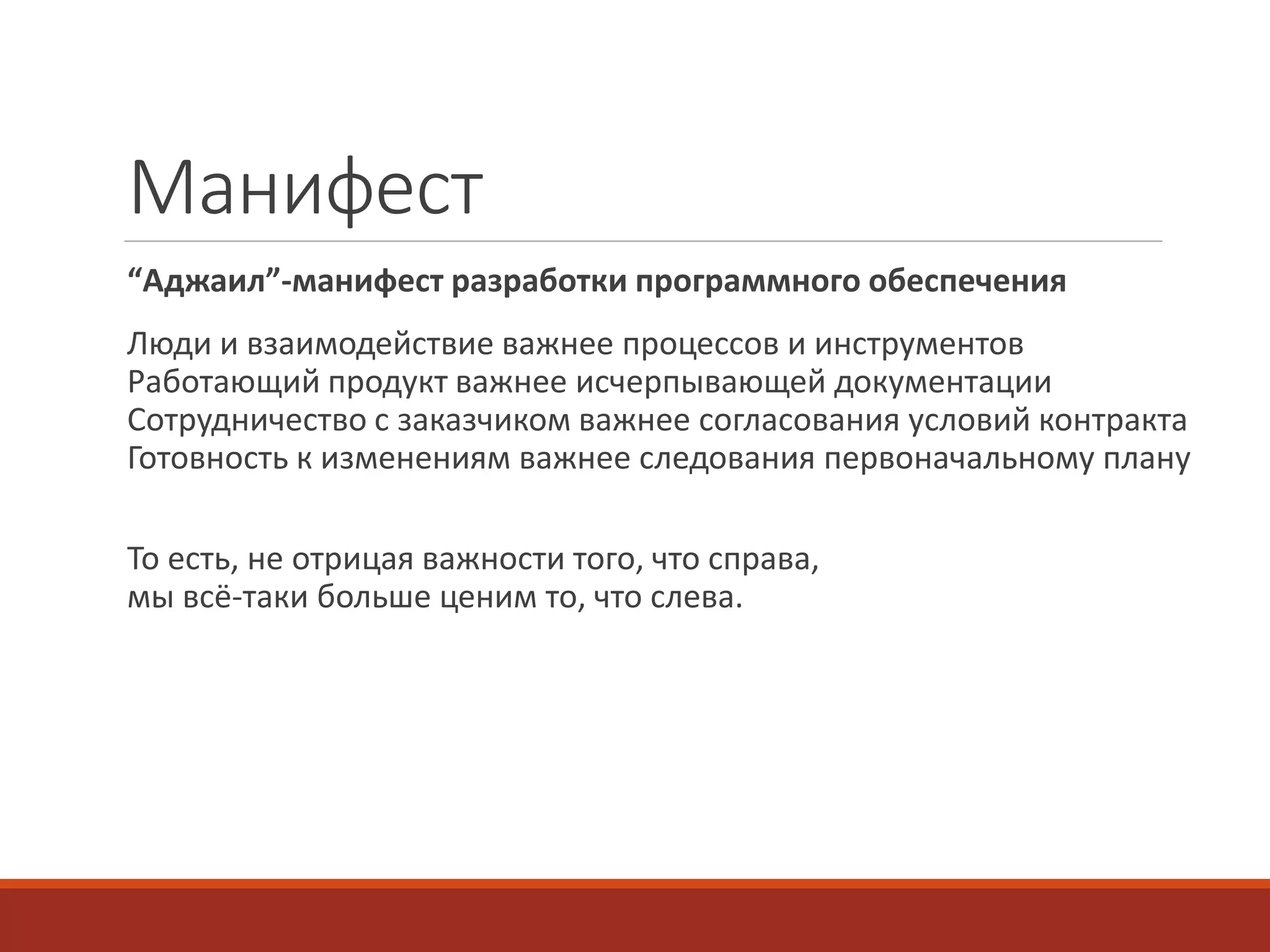
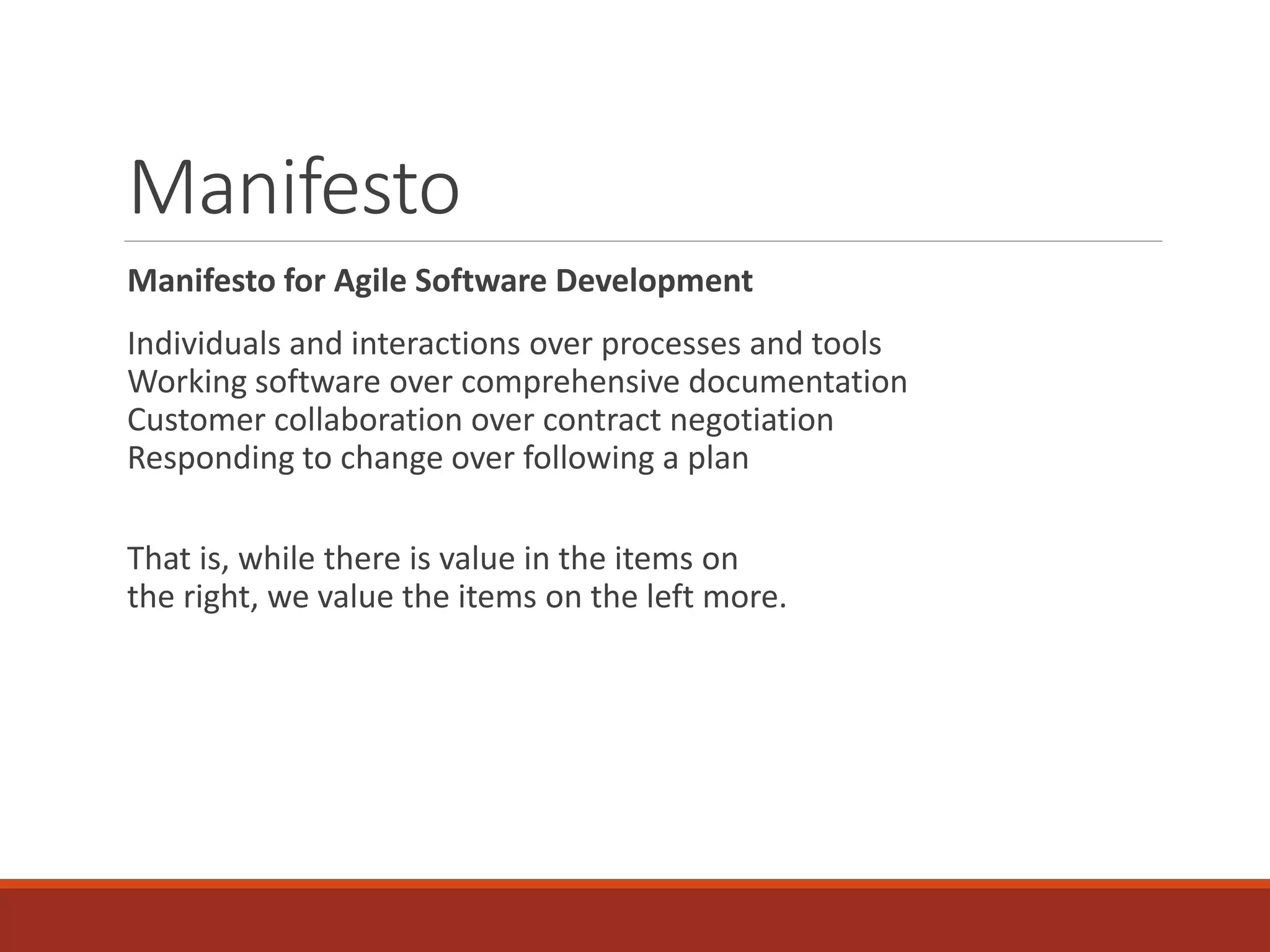
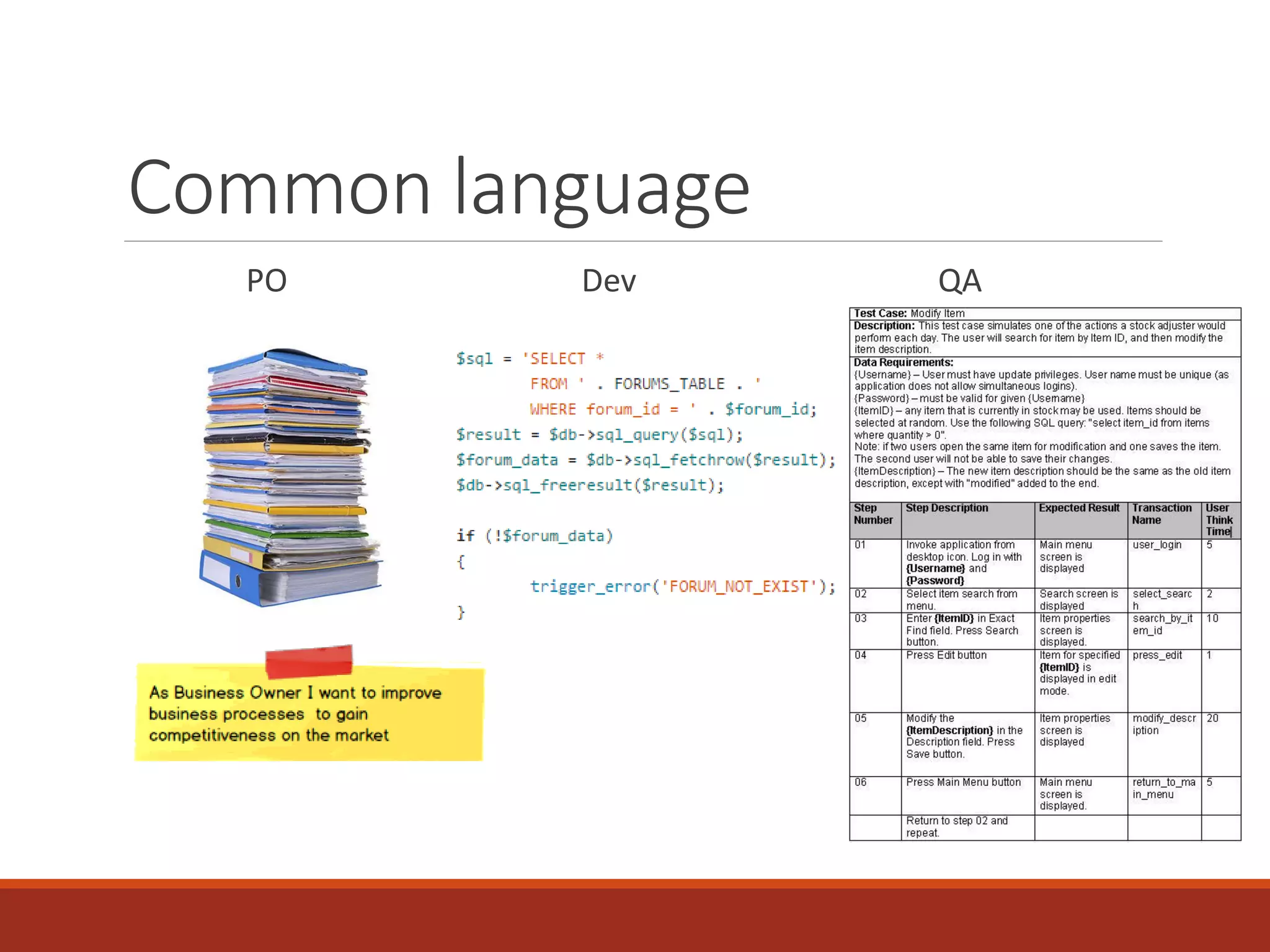
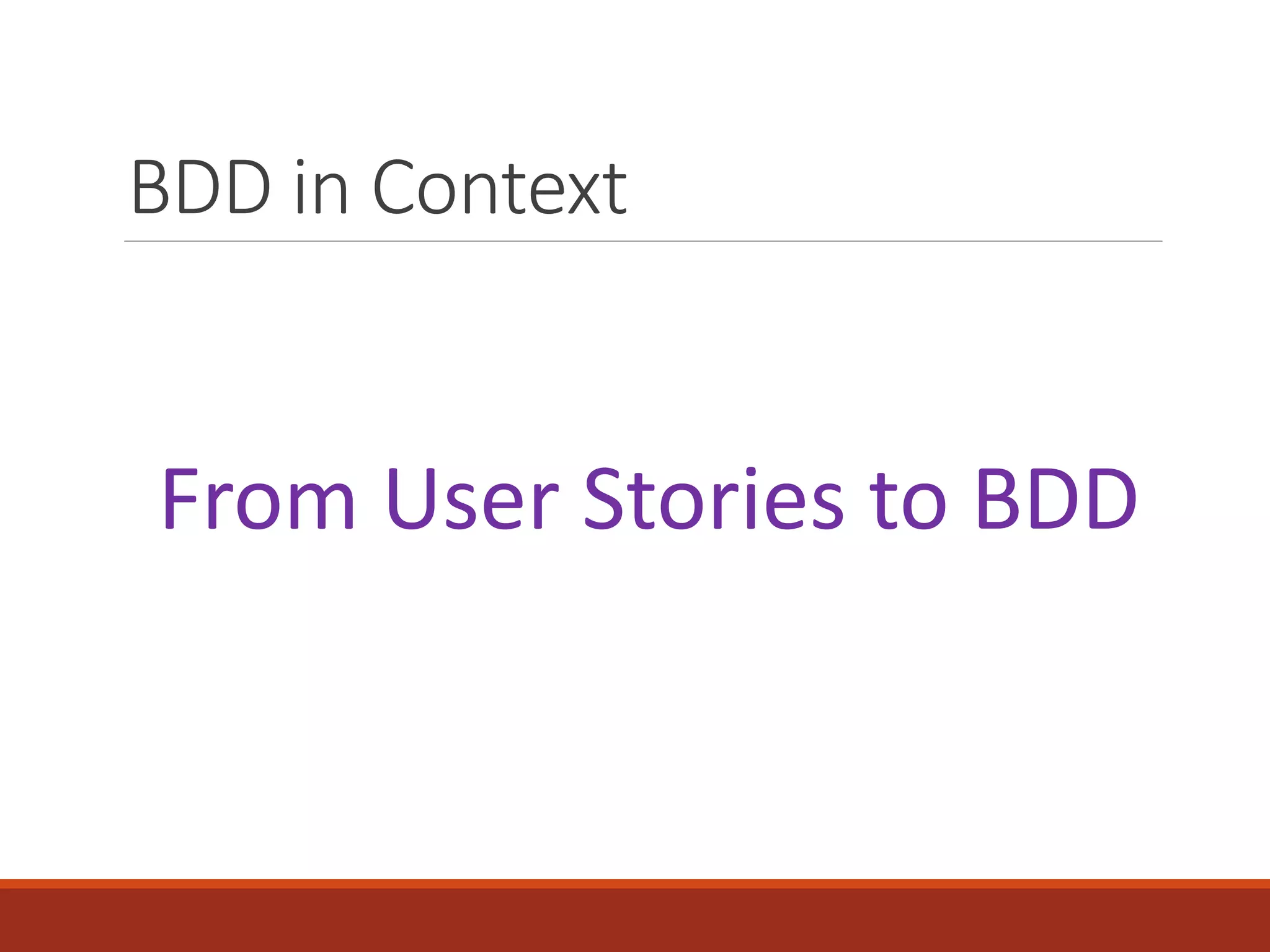

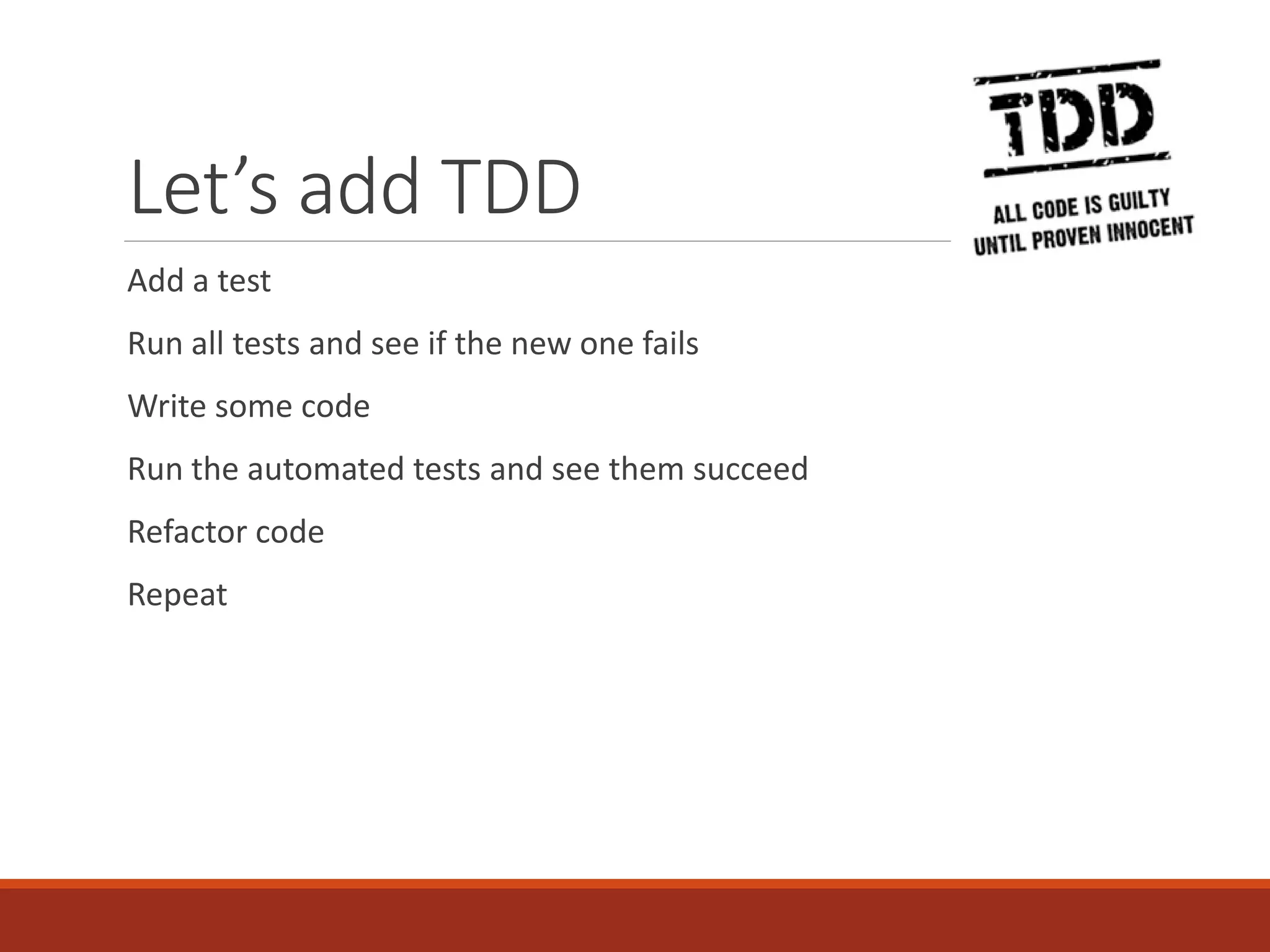
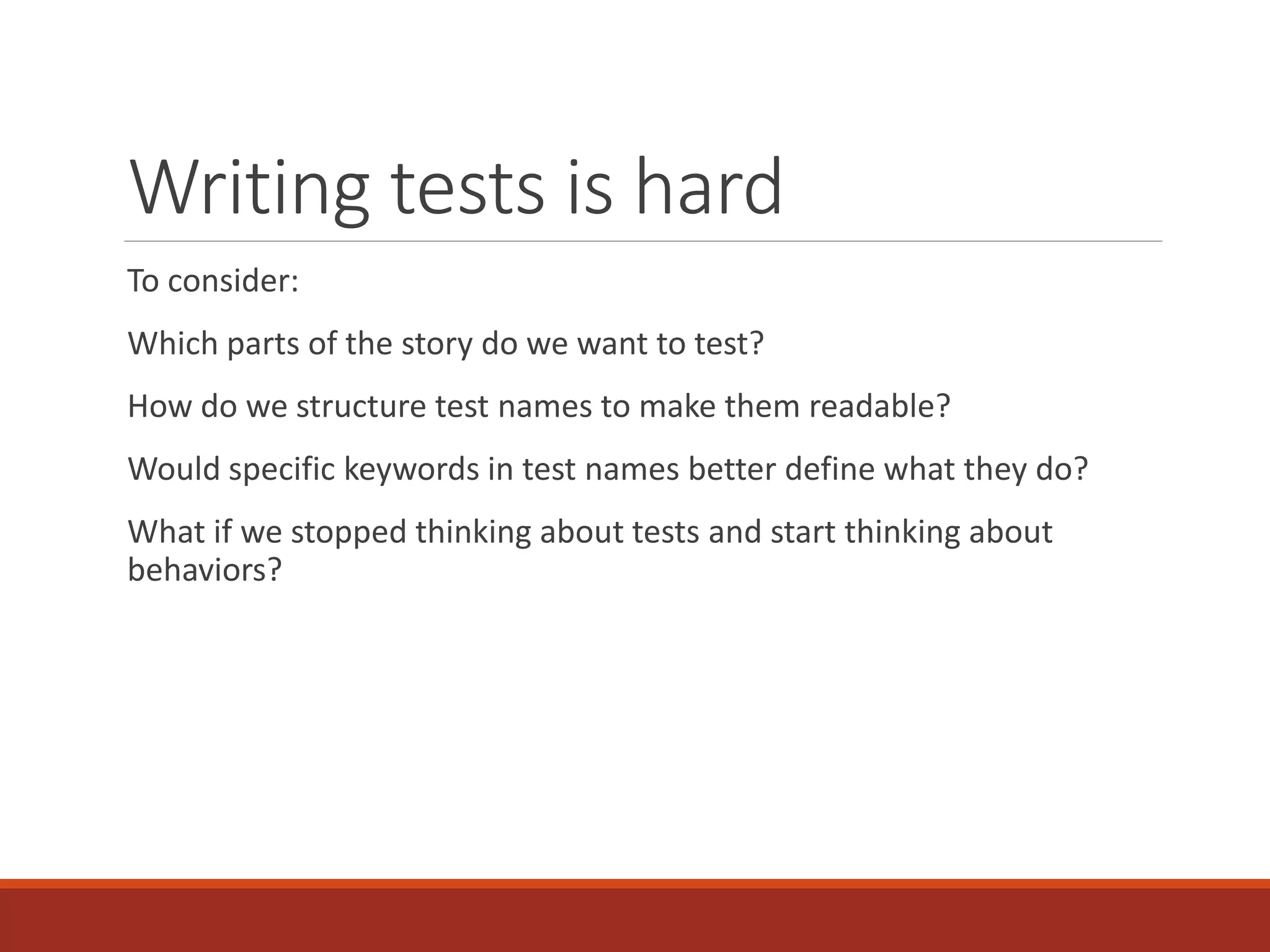
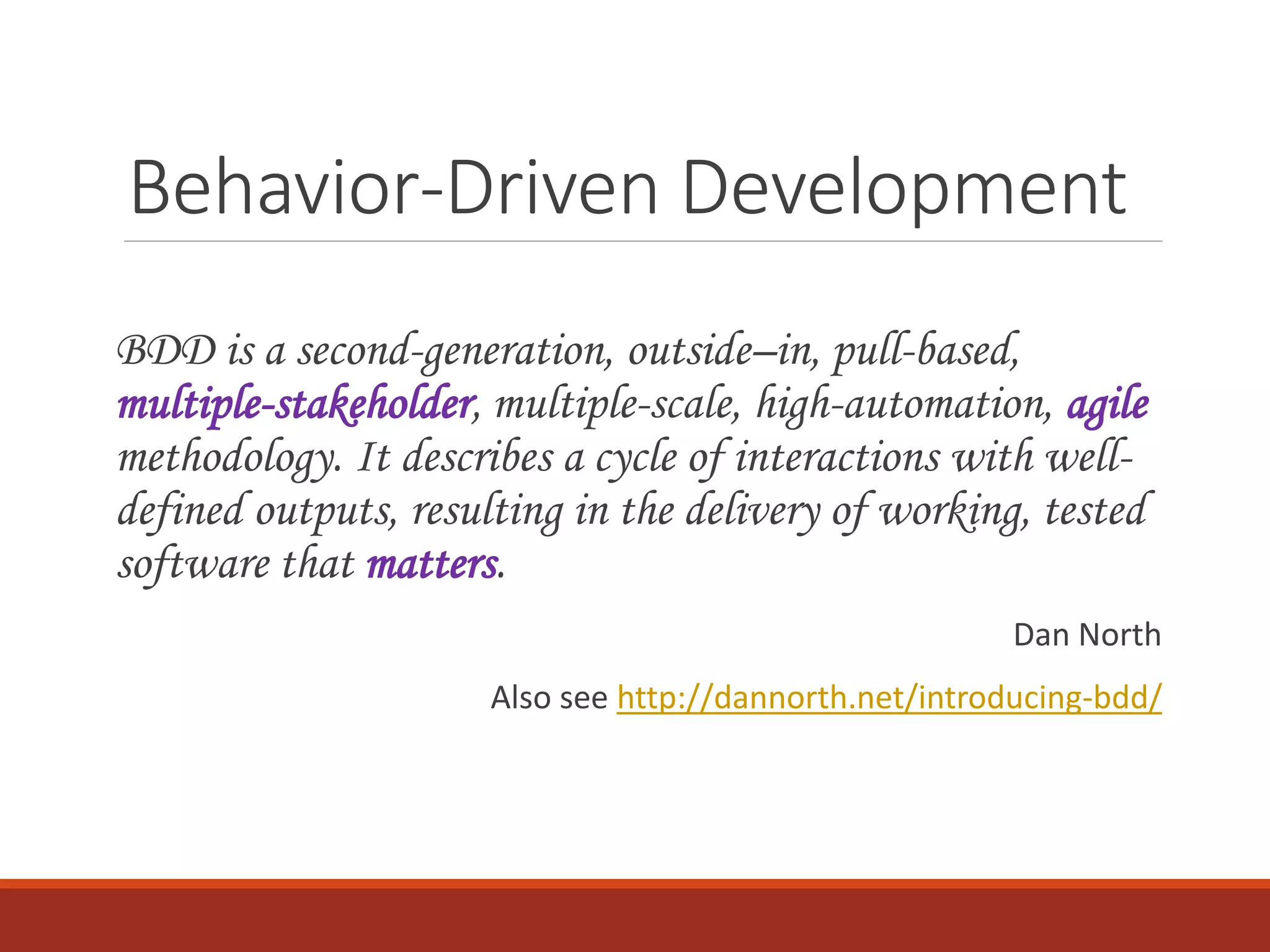
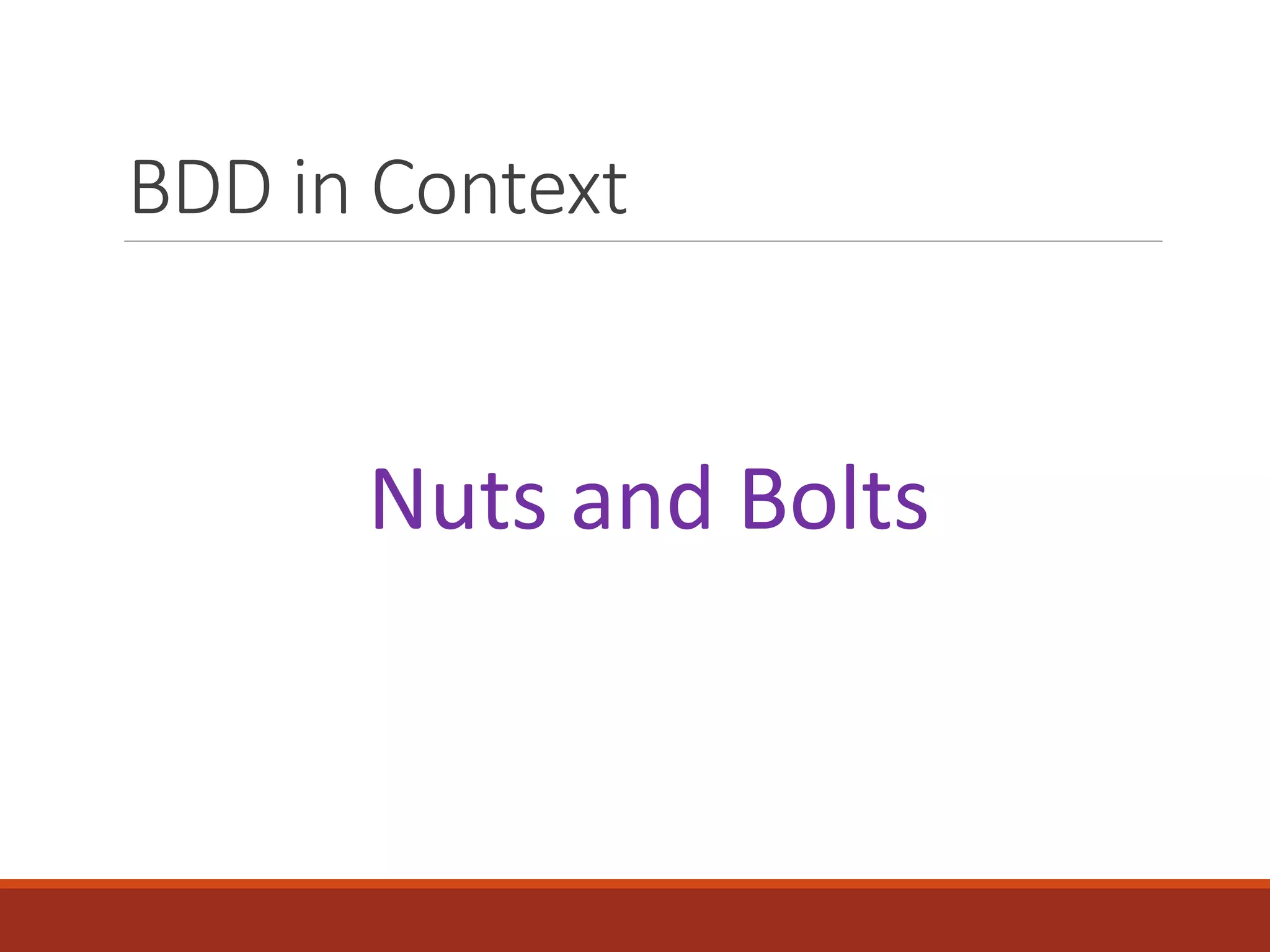

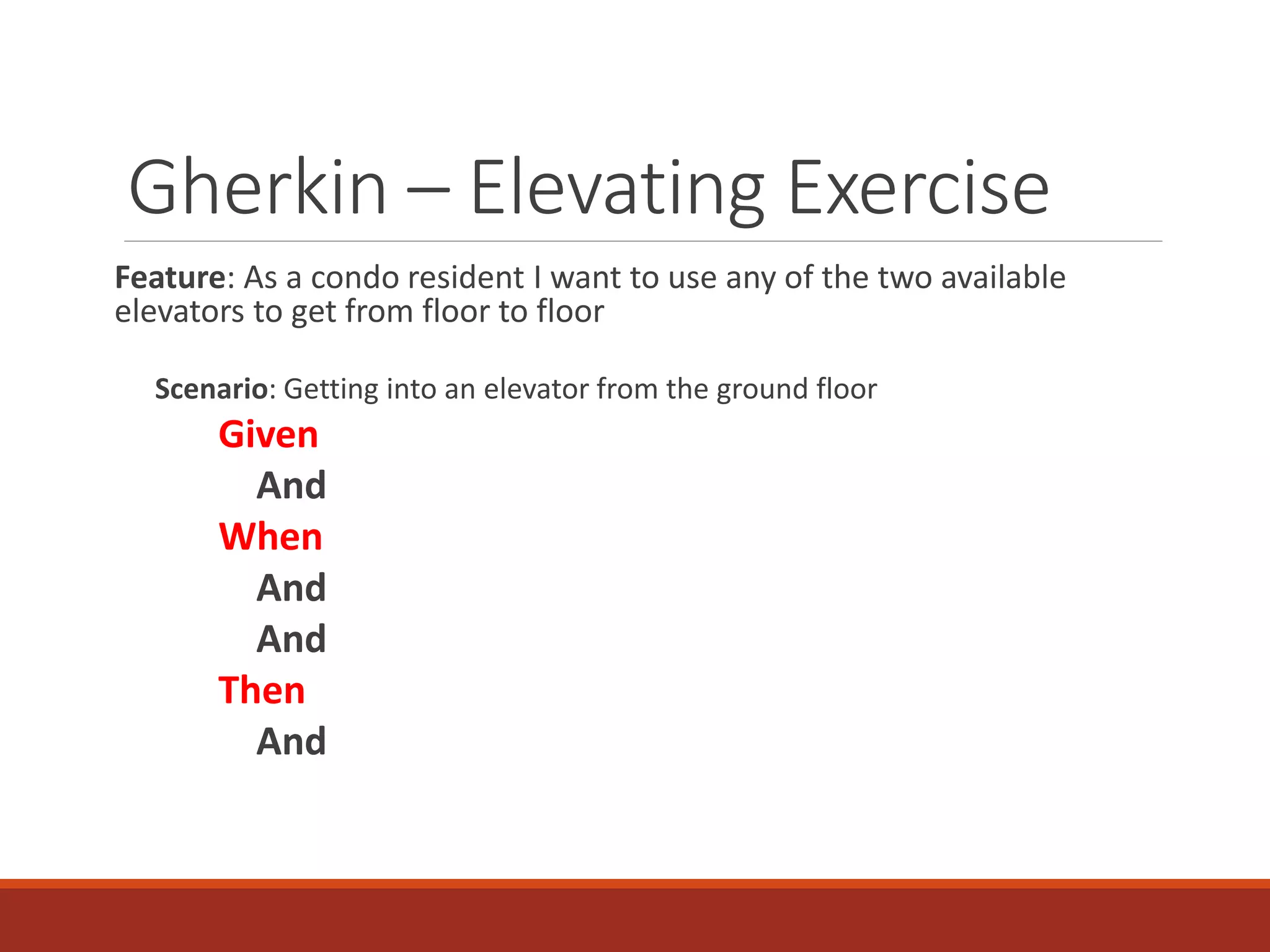
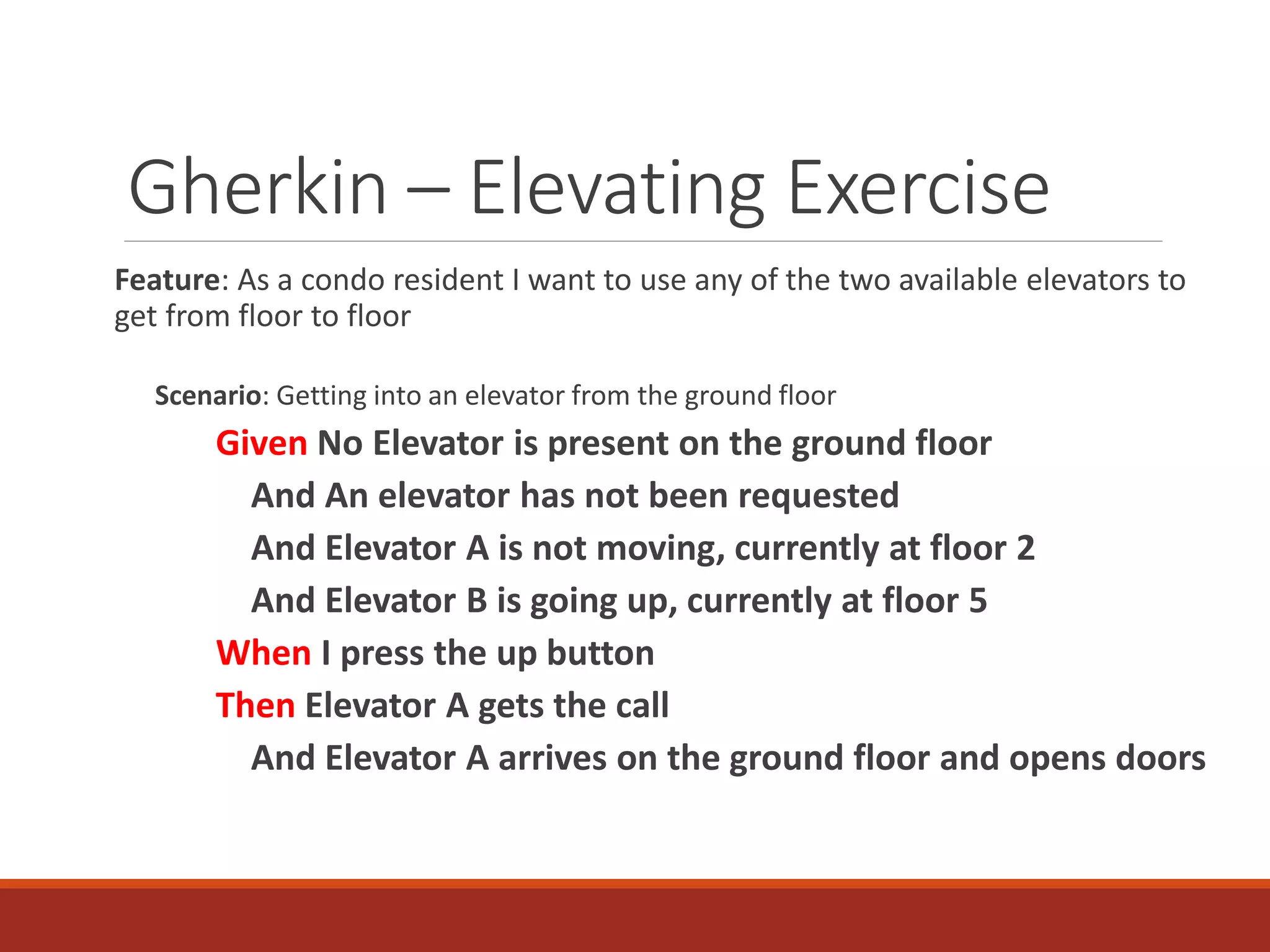
![Gherkin – Elevating Exercise
Feature: As a condo resident I want to use any of the two available elevators to get
from floor to floor
Scenario: Getting into an elevator from the ground floor
Given [No] Elevators are present on the [ground] floor
And An elevator has not been requested
And Elevator [A] is not moving, currently at floor [2]
And Elevator [B] is going up, currently at floor [5]
When I press the [up] button
Then Elevator [A] gets the call
And Elevator [A] arrives on the [ground] floor and opens doors](https://image.slidesharecdn.com/behaviordrivendevelopmentincontext-141110174503-conversion-gate02/75/Behavior-Driven-Development-BDD-in-context-16-2048.jpg)
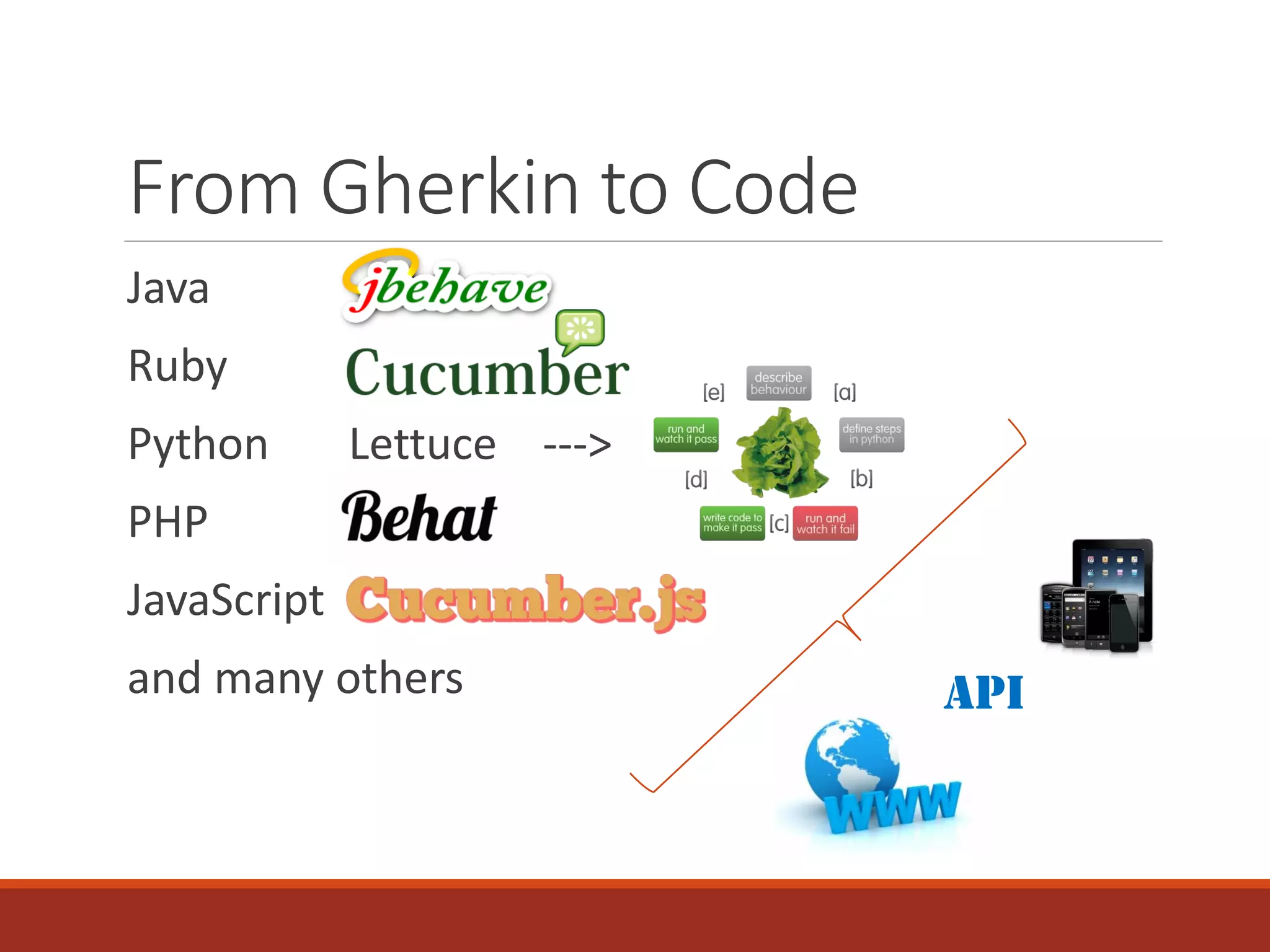
![From Gherkin to Code
BDD Step: Elevator A gets the call
BDD Framework:
ElevatorAPI.callElevator(ground level, direction up);
BDD Framework:
If(Not ElevatorAPI.callAcknowledged(ground level))
Throw new Exception(“Elevator not called”);
BDD Step: I press the [up] button](https://image.slidesharecdn.com/behaviordrivendevelopmentincontext-141110174503-conversion-gate02/75/Behavior-Driven-Development-BDD-in-context-18-2048.jpg)
![Demo
Feature: User status update
Scenario: Normal flow, user is able to login and post a status update
Given I go to "www" with url "/"
And I fill in element "//*[@id='signin-email']" with value "agiledemo"
And I fill in element "//*[@id='signin-password']" with value
"demoagile"
And I click element "//*[@id='front-
container']/div[2]/div[2]/form/table/tbody/tr/td[2]/button"
And I verify current url path is "/"
And I verify text present "AgileDemo"
And I verify text present "@agiledemo"
And I ensure text not present "Writing a BDD presentation"
When I fill in element "//*[@id='tweet-box-mini-home-profile']"
with value "Writing a BDD presentation"
And I click element
"//*[@id='timeline']/div[1]/div/form/div[2]/div[2]/button"
Then I verify text present "Writing a BDD presentation"](https://image.slidesharecdn.com/behaviordrivendevelopmentincontext-141110174503-conversion-gate02/75/Behavior-Driven-Development-BDD-in-context-19-2048.jpg)
